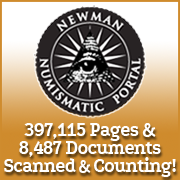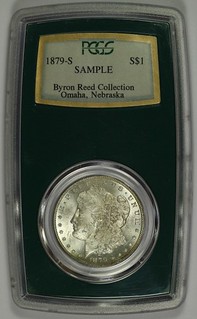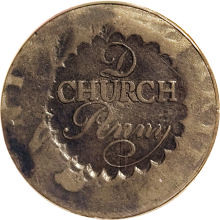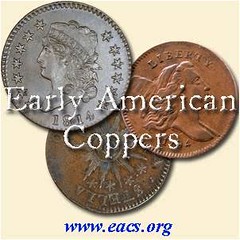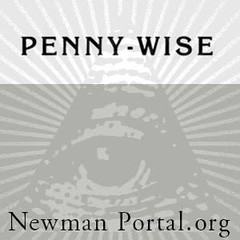
About UsThe Numismatic Bibliomania Society is a non-profit organization devoted to the study and enjoyment of numismatic literature. For more information please see our web site at coinbooks.org SubscriptionsThose wishing to become new E-Sylum subscribers (or wishing to Unsubscribe) can go to the following web page link MembershipThere is a membership application available on the web site Membership Application To join, print the application and return it with your check to the address printed on the application. Print/Digital membership is $40 to addresses in the U.S., and $60 elsewhere. A digital-only membership is available for $25. For those without web access, write to: Terry White, Treasurer AsylumFor Asylum mailing address changes and other membership questions, contact Terry at this email address: terrywhite5475@yahoo.com SubmissionsTo submit items for publication in The E-Sylum, just Reply to this message, or write to the Editor at this address: whomren@gmail.com BUY THE BOOK BEFORE THE COIN |
- WAYNE'S WORDS: THE E-SYLUM OCTOBER 2, 2016
- KOLBE & FANNING SALE 143 OCTOBER 21-22, 2016
- CAPTION CORRECTION FOR FIRST DEXTER 1804 DOLLAR PHOTO
- NEW BOOK: IMPERIAL PUNCHMARKED COINS OF ANCIENT INDIA
- NEW BOOK: EARLY COINAGE OF BENGAL
- BOOK REVIEW: NUMISMATIC ARCHAEOLOGY OF NORTH AMERICA
- BOOK REVIEW: SAMPLE SLABS, 2ND EDITION
- NEWMAN PORTAL SCANS BUNYAN’S CHIPS
- NOTES FROM E-SYLUM READERS: OCTOBER 2, 2016
- MORE ON MINT ENGRAVER ENGELHARDUS VON HEBEL
- QUERY: A COLONIAL COUNTERSTAMP MYSTERY
- BENNO LOEWY (1854-1919)
- FARRAN ZERBE (1871-1949)
- TOKEN AND MEDAL DEALER JOHN WHITMORE
- ERNEST HEMINGWAY AND NUMISMATICS
- BONHAM'S SELLS ECKFELDT-DUBOIS GOLD SAMPLE BOOK
- GEORGE HAYLINGS: A NO-PROFIT COIN PROPHET
- THE HIBLER-KAPPEN SO-CALLED DOLLARS BOOK
- BEBEE BUYS A BANK BUILDING: COIN SHOPS IN AMERICA
- PODCAST: JON ALAN BOKA'S 1794 CENTS
- $5 RICHMOND, VA PANIC OF 1893 NOTE
- CABARRUS COLLECTION OF CONFEDERATE PAPER
- SHOW PROMOTION IDEA: OVERSTAMPED DOLLAR BILLS
- NEW YORK INTERNATIONAL ANNOUNCES NEW VENUE
- HAPPY ANNIVERSARY: GUTENBERG'S PRINTING PRESS
- ROMAN COINS FOUND IN RUINED JAPANESE CASTLE
- THE FACE-DOWN SKELETON'S SATCHEL OF COINS
- ZARA SIEGE COINAGE
- THE DOLLAR IN REVOLUTIONARY AMERICA
- THE BECK’S PUBLIC BATHS TOKEN
- ASIAN COINS FOUND IN DEADWOOD'S CHINATOWN
- MEDAL OF COIN CABINET DIRECTOR FRANZ NEUMANN
- FALKIRK UNION BANK NOTES OFFERED
- ARTIST CONCEIVES REDESIGNED SCOTTISH BANKNOTES
- THIEF RUNS OFF WITH BARREL OF GOLD FLAKES
- THE PREUSSAG COLLECTION – PART II
- FEATURED WEB SITE: HOW COINS ARE MADE
Click here to access the complete archive
To comment or submit articles, reply to whomren@gmail.com
WAYNE'S WORDS: THE E-SYLUM OCTOBER 2, 2016
New subscribers this week include: Ron Cheek, Stephen Carofalo, Mark Ditz, and Ginger Rapsus. Welcome aboard! We now have 2,020 subscribers.
Welcome also to new advertisers Julian Leidman and Peter Bertram. Also, we're beginning a new series of rotating ads for organizations partnering with the Newman Numismatic Portal. Starting with Early American Coppers, Inc, the ads will link to the club's web site as well as their publication archive on NNP. Have a look at both!
This week we open with a new Kolbe & Fanning numismatic literature sale, two new books and two reviews. Other topics this week include wooden nickels, U.S. Mint engraver Engelhardus von Hebel, collectors Benno Loewy and Jon Alan Boka, dealers Farran Zerbe, Aubrey Bebbe and John Whitmore, the Panic of 1893, and an artist's designs for new Scottish banknotes.
To learn more about the William H. Woodin and Peter Gschwend sales, punchmarked coins of ancient India, sample slabs, COYN Press, a colonial counterstamp mystery, Ernest Hemingway, the Eckfeldt-DuBois book with a California gold sample, powdered stearic acid, Zara siege coins, and the Beck’s Public Baths token, read on. Have a great week, everyone!
Wayne Homren
Editor, The E-Sylum
KOLBE & FANNING SALE 143 OCTOBER 21-22, 2016
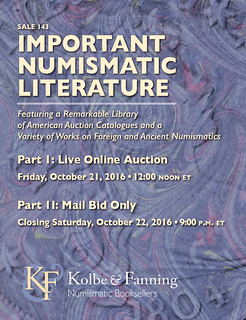 Kolbe & Fanning are pleased to announce that our 143rd
sale of important numismatic literature will be held on October
21 and 22, 2016. The two-part sale will feature the remarkable
library of American numismatic auction catalogues formed by a
prominent Texas collector, buttressed by a wide-ranging library
on foreign and ancient coins formed by a collector in Ohio.
Printed catalogues have been mailed at this time and will be
arriving in the mailboxes of established clients shortly.
Kolbe & Fanning are pleased to announce that our 143rd
sale of important numismatic literature will be held on October
21 and 22, 2016. The two-part sale will feature the remarkable
library of American numismatic auction catalogues formed by a
prominent Texas collector, buttressed by a wide-ranging library
on foreign and ancient coins formed by a collector in Ohio.
Printed catalogues have been mailed at this time and will be
arriving in the mailboxes of established clients shortly.
Part I, featuring 293 lots, will be conducted as a live online sale at 12:00 noon on Friday, October 21. Bidders may participate in this part of the sale in a variety of ways: in advance via mail, phone, fax or email--or on the day of the sale through our live bidding platform at auction.numislit.com. Register in advance, browse lots and place bids at your leisure: all lots in the first part are illustrated in the online catalogue. Live bidding will commence at noon eastern time on October 21.
Part II features over 800 lots of numismatic books, periodicals and catalogues from around the world, and will be conducted as a traditional mail-bid sale (no online component). This second part of the sale will close at 9:00 PM EDT on Saturday, October 22. Bids may be placed via mail, phone, fax or email; bids will be treated as limits and reduced as competition dictates.
Some highlights include the following:
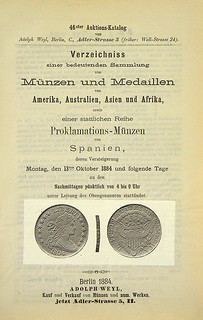
Lot 273: the exceptionally rare 1884 Adolph Weyl catalogue offering the Dexter 1804 dollar, complete with the famous photograph
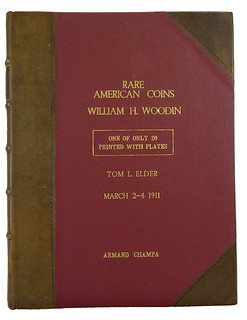
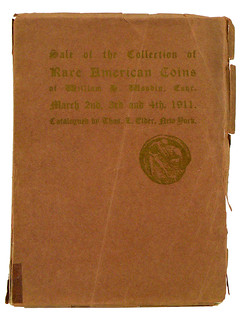
Lot 146: a rare plated copy of Tom Elder’s catalogue of the William H. Woodin collection (1911); other plated Elder sales present include the Peter Gschwend sale and the 1917 Miller sale, among others
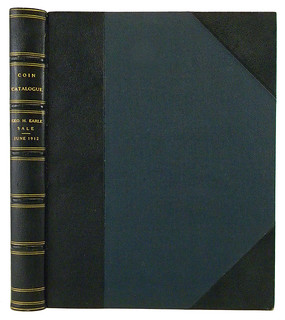
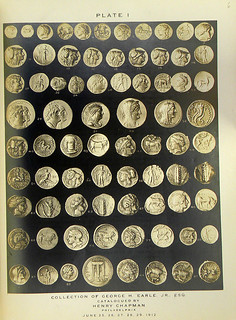
Lot 113: a beautifully bound copy of Henry Chapman’s 1912 plated catalogue of the Earle collection, from the libraries of William H. Woodin and John J. Ford, Jr.; the sale also includes plated copies of the David S. Wilson and John Story Jenks collections, among other plated catalogues of the Chapman brothers
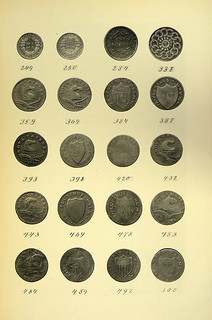
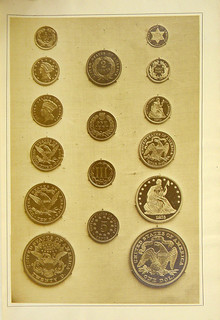
Lots 236 and 253
Lot 236: John J. Ford’s copy of the rare plated Maris sale (H.P. Smith, 1886)
Lot 253: J.N.T. Levick’s copy of the very rare Descriptive Catalogue of the Seavey collection (Strobridge, 1873), with 5 plates
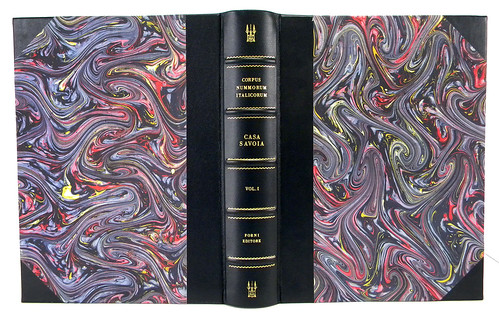
Lot 70: the 20-volume reprint edition of Victor Emmanuel III’s Corpus Nummorum Italicorum
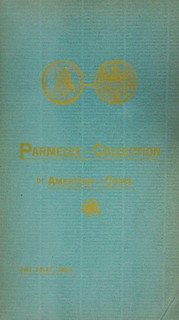
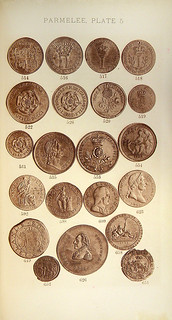
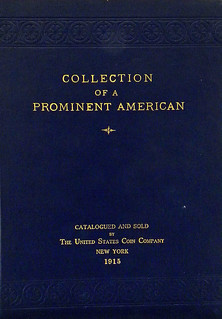
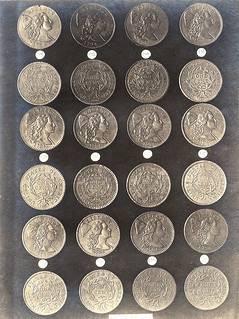
Lot 261: a plated copy of the United States Coin Company’s 1915 sale of the Granberg collection
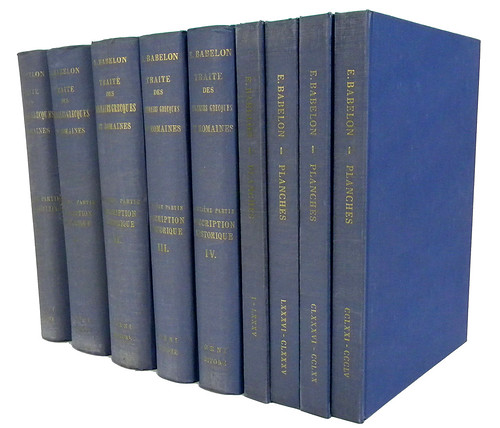
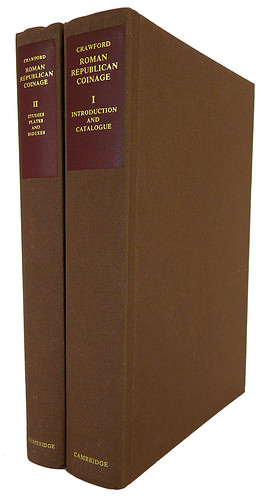
Lots 4 and 7
Lot 4: the useful Forni edition of Babelon’s Traité des monnaies grecques et romaines
Lot 7: Crawford on Roman Republican coins
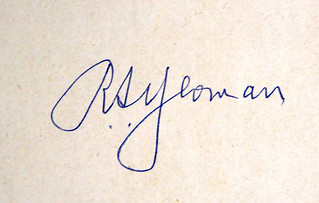
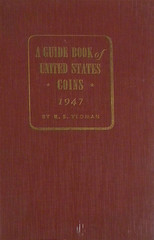
Lot 293: a first edition Red Book signed by R.S. Yeoman.
The sale’s offerings include hundreds of early American auction catalogues, most of which are individually catalogued, providing clients with a valuable opportunity to fill gaps in their libraries.
As mentioned above, printed catalogues are being mailed to established clients; a PDF of the catalogue has been posted to the main numislit.com website for those who prefer to read online. In addition, prospective bidders are able to access the live online catalogue and register to bid in Part I of the sale through auction.numislit.com.
Kolbe & Fanning Numismatic Booksellers LLC is a licensed and bonded auction firm in the State of Ohio. For more information, please see the Kolbe & Fanning website at numislit.com or email David Fanning at df@numislit.com. We look forward to your participation.
CAPTION CORRECTION FOR FIRST DEXTER 1804 DOLLAR PHOTO
David Fanning reports that in the process of reviewing the printed catalogue of the upcoming Kolbe & Fanning sale of Oct. 21-22, he found a significant error in the caption for lot 273, the rare 1884 Adolph Weyl catalogue featuring what is now known as the Dexter 1804 dollar. The caption claims that this is the “First Photographic Representation of an 1804 Dollar,” which is not true. The first photographic representation of an 1804 dollar was in Edward Cogan’s 1874 catalogue of the Sanford collection--which one could learn by reading the description of the copy offered as lot 133 of the same sale. The caption for lot 273 should read, “First Photographic Representation of the Dexter 1804 Dollar.” The error has been fixed in both the online catalogue and the PDF posted to the firm’s website at numislit.com, but unfortunately was only discovered the day the catalogues had been mailed.
For more information about the sale, see:
www.numislit.com

NEW BOOK: IMPERIAL PUNCHMARKED COINS OF ANCIENT INDIA
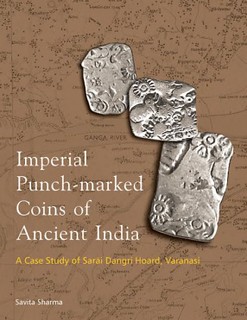 Imperial Punchmarked Coins of Ancient India: A Case
Study of Darai Dangri Hoard, Varansi
Imperial Punchmarked Coins of Ancient India: A Case
Study of Darai Dangri Hoard, Varansi
Authors (s): Savita Sharma (Author)
Format: Hardcover
ISBN-13: 9788173055461
Pages: xiv+238p., B/w Illustrations 217; 22 X 28cm.
Pub. date: 31.05.2016, 1st. ed.
Publisher: Aryan Books International
Language (s): English BagcheeID: BB102124
List price: US $ 180,00
Bagchee price: US $ 162,00
You save: (10.00%)
Member price: US $ 145,80
India's indigenous coinage is rich and varied, distinguished by regional, cultural and linguistic features and representing imperial and political associations. The class of coins that finds frequent mention in ancient Indian epigraphs and literary sources is the karsapana. Karsapana, also known as Purana or Dharana, are the punch-marked coins which were in circulation throughout ancient India. Many hoards of silver punch-marked coins have been located in sites all over the country. Its widespread availability suggests that it was a standard medium of exchange from about the 6th century BCE.
Every new discovery of a treasure-trove has something new to add to the mine of knowledge extensively compiled by scholars. An earthen pot containing 333 ancient silver punch-marked coins was found in July 1997, from Sarai Dangri village, Varanasi while digging the foundation of a primary school building. These coins were handed over to Bharat Kala Bhavan, Banaras Hindu University, Varanasi in 1998 by the District Magistrate of Varanasi. The study of these coins forms the subject matter of this volume. Coins in this hoard, classified as Imperial Karsapana, are datable to circa 4th century to 2nd century BCE, comprising seventy-six varieties.
The volume is divided into four parts: Part I commences with an explanatory introduction outlining the importance of this hoard. This also serves as a comprehensive backdrop of the present study; Part II covers classification and cataloguing. Here an attempt has been made to refer to most of the published material and views, with drawings and illustrations of obverse and reverse of each variety in tabulated form; Part III incorporates the observations on the present study and includes tables of the symbols in detail, as well as a brief description on extra-marks and half-coins; Part IV comprises appendices on weights and chemical analysis based on some coins of the hoard, an EDS Report, dispersal of coins, list of hoards and a bibliography.
The volume should be of immense help to students and scholars of numismatics. They will gain a deeper insight and understanding of Indian numismatics in general and about this remarkable series of silver punch-marked coins in particular.
To read the complete article, see:
Imperial Punchmarked Coins of Ancient India: A Case Study of
Darai Dangri Hoard, Varansi
(www.bagchee.com/books/BB102124/imperial-punchmarked-coins-of-ancient-india-a-case-study-of-darai-dangri-hoard-varansi)
NEW BOOK: EARLY COINAGE OF BENGAL
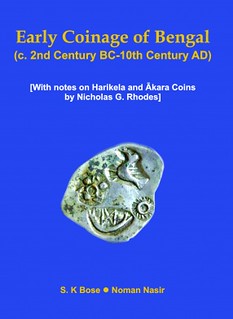 Early Coinage of Bengal: c. 2nd Century BC-10th
Century AD: With Notes on Harikela and Akara Coins
Early Coinage of Bengal: c. 2nd Century BC-10th
Century AD: With Notes on Harikela and Akara Coins
Authors (s): S.K. Bose (Author) , Noman Nasir (Author)
Format: Hardcover
ISBN-13: 9789351967408
Pages: x+244p., Illustrations; 45 Colour Plates; 100 B/W;
25cm.
Pub. date: 23.06.2016, 1st. ed.
Publisher: Mira Bose
Language (s): English
Bagchee ID: BB102520
List price: US $ 142,00
Bagchee price: US $ 127,80
You save: (10.00%)
Member price: US $ 115,02
Foreword, Preface, Geographical and Political Formations, Life of the People Early Bengal, Communication Waterways, Trade and Commerce Inland and Sea borne Routes, Circulation of Cowrie shells as medium of exchange, Bead and Ornaments, Early Coinage of Bengal Economic Zones a) Chandraketugarh b) Wari-Bateshwar c) Mahasthangarh d) Samanta e) Harikela f) Akara g) Tamralipta h) Puri Kushana i) Sundarbans and Coastal Bengal.
To read the complete article, see:
Early Coinage of Bengal: c. 2nd Century BC-10th Century AD: With
Notes on Harikela and Akara Coins by Nicholas G. Rhodes
(www.bagchee.com/books/BB102520/early-coinage-of-bengal-c-2nd-century-bc-10th-century-ad-with-notes-on-harikela-and-akara-coins-by-nicholas-g-rhodes)
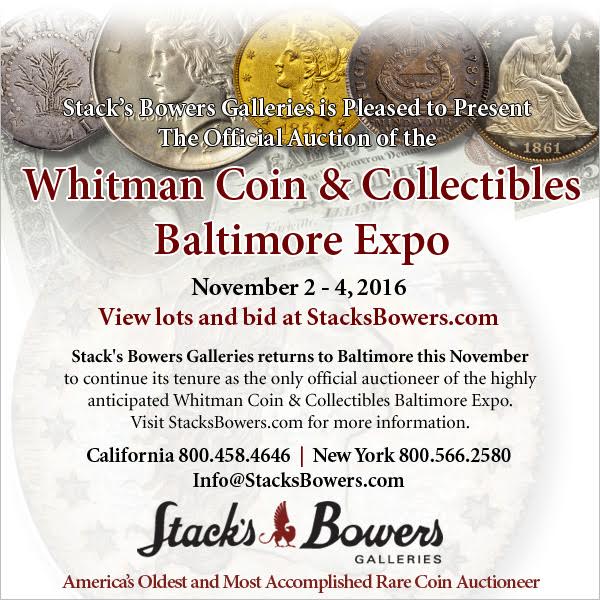
BOOK REVIEW: NUMISMATIC ARCHAEOLOGY OF NORTH AMERICA
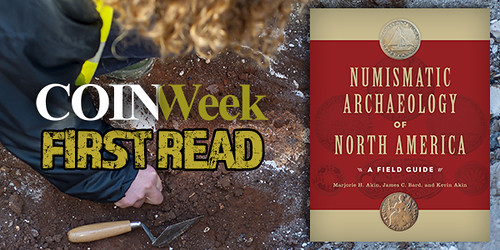
Numismatic Archaeology of North America: A Field Guide is a book that sought us out. Almost Literally.
In Army chow halls across the country there’s an expression: “Eat First – Taste Later”. That’s certainly a sentiment that carries weight at busy coin shows for your faithful CoinWeek editors. And while we certainly do our best to take in all of the sights and attractions at each of the major coin conventions and auctions we attend throughout the year, it isn’t until we get back to the office, process hour upon hour of footage and follow up with friends and colleagues that we truly get a sense of what we just experienced.
Yet suffice it to say, from the moment we were introduced to the book by the authors we were intrigued.
A flip through the 280+ page, lavishly illustrated book revealed not just the potential usefulness of such a volume – especially for metal detectorists – but also the book’s narrative point of view, which was immediately apparent even though we were just kicking the tires at first.
“Ok, I’m in,” I said. And $50 later, I took my handsome copy of the book and tucked it in amongst my things at the CoinWeek booth.
The book’s introductory chapters describe the origins and development of scientific approaches to numismatics in Europe and how American numismatics is different. Indeed, the United States remains a young country and our archeological history as it comes to money is much different than it is in the so-called “Old World”. But the use of money on the American continent predates European settlement and the mixture of indigenous and invasive cultures presents researchers with a complex, often surprising tapestry of monetary “stories”. And it’s the story that found numismatic material can tell archaeologists that forms the basis of this narrative.
The story of money in North America is a story of Spanish silver and cowrie shells; of wampum, achum, commodity money and money of necessity; of silver and gold coins; of base metal tokens; of paper money, coupons, and scrip. It’s also a story of the intermingling of moneys from faraway cultures and the tales these transplanted stores of value tell us about how these objects were used here, when, and by whom.
It is in the capable telling of this story–written from the perspective of discovery–where Numismatic Archaeology of North America succeeds as an anthropological narrative about money and its exonumic cousins. An unearthed Lincoln cent of recent mintage found a foot or two off of a nature trail may tell an obvious story of human activity in that given area, but what story does a trove of pre-Qing dynasty coins unearthed at a Colorado dig site have to share? Or, for that matter, a cache of Vietnamese phan, yan and dong coinage from 1740-1883?
Numismatic Archaeology of North America: A Field
Guide
By Dr. Marjorie H. Akin, Dr. James C. Bard, and Kevin Akin 289
Pages, Routledge. Softback. $50; Hardback $150
We've just heard a numismatist's take. Do we have any archaelogists or metal detectorists reading this? I'd love to read your review of the book. It will be interesting to see how it is perceived in these other disciplines.
See another article elsewhere in this issue about authors Margie and Kevin Akin and their analysis of Asian coins recovered in Deadwood, SD. -Editor
To read the complete article, see:
First Read: Numismatic Archaeology of North America: A Field
Guide
(www.coinweek.com/recent-articles-video/first-read-numismatic-archaeology-north-america-field-guide/)

BOOK REVIEW: SAMPLE SLABS, 2ND EDITION
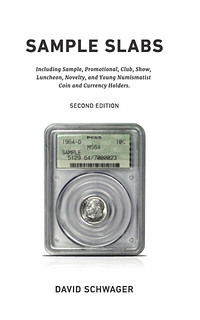 Numismatic writer David Schwager’s Sample Slabs
catalog—a behemoth 620-page compendium of sample coin and
currency holders from dozens of companies, including NGC and
PCGS—is a fascinating study in “buying the holder, not the coin.”
Well, maybe that’s an overstatement because the work is so well
written, researched and illustrated that you may want one, as I
did, for a personal numismatic library.
Numismatic writer David Schwager’s Sample Slabs
catalog—a behemoth 620-page compendium of sample coin and
currency holders from dozens of companies, including NGC and
PCGS—is a fascinating study in “buying the holder, not the coin.”
Well, maybe that’s an overstatement because the work is so well
written, researched and illustrated that you may want one, as I
did, for a personal numismatic library.
I have been interested in the design of holders ever since purchasing a silver dollar in a PCGS Regency holder. Earlier this month one such “sample” holder, believed to be the only one of its kind, sold on eBay for $3,449.99. Owned by numismatist Michael Kittle, who purchased the holder at the ANA World’s Fair of Money in Anaheim.
Kittle saw Schwager at the Anaheim show shortly after he bought the PCGS Regency sample slab. “I showed it to him to see if he had ever seen one before and he said he couldn’t even believe what he was looking at,” Kittle said. “He told me if one had been known before, it would have been on the cover of his book.”
Schwager’s book not only catalogs slabs but also explains how to collect them. Each entry has a designation identifying the company, coin, and other attributes, along with a narrative and estimated value. “You and I will probably never discover a VAM silver dollar variety,” he writes, “but we will discover samples unlisted in any reference.”
That is precisely what Kittle did at the ANA show, and it paid off handsomely.
Schwager explains several ways to begin collecting sample slabs. Before we get to the explanation, you should keep in mind that the word “sample” is key here. NGC “Black Slabs” and PCGS Regency and Doily slabs sell for premiums with coins inside, too; in fact, an NGC Black Slab with a 1946-D Half Dollar sold on the same day as Kittle’s Regency holder for $3,740 (realized price) in a GreatCollections sale. What made Kittle’s holder special (and some might say, a bargain) was the word “sample.” Certainly, you can collect holders without that word but you also will be paying for the coin inside. Schwager’s book is geared to the hundreds of hobbyists who collect sample slabs for the slabs themselves.
As an added bonus, Schwager’s book also includes currency holders.
I understand the motto, “buy the coin, not the holder,” and I also understand that many readers here would never consider paying top dollar for a piece of plastic. But there is another way to look at it: These holders are part of collecting history, and the pursuit of collecting is really the fun part of what we do as hobbyists.
So what do you think? Do you collect sample holders? Would you consider doing so? If not, here’s a thought: You may just want to purchase this book and save your hobbyist dollars for coins rather than plastic.
I recommend Schwager’s catalog not only for the sharp photos of holders but also for his concise descriptions full of history and anecdotes. The work sells in softcover for $26 plus $5 shipping. You can get a PDF version for $12, or both book and PDF for $31 plus $5 shipping.
Click here for ordering information:
https://sites.google.com/site/sampleslabbook/
To read the complete article, see:
Review: “Sample Slabs” (2nd ed.), by David Schwager
(http://news.coinupdate.com/review-sample-slabs-2nd-ed-by-david-schwager/)
A PCGS Regency sample slab, the first one known to exist, sold for $3,449.99 in an eBay auction on September 18. This far exceeds the previous record high price for a single sample of $609 paid for a PCGS hand-cut doily (catalog PCGS-010-2-2) in March of this year.
Although TPG authority Conder101 mentioned a rumored sighting at a Long Beach Expo in 2007, this is the first confirmed news of the existence of a PCGS Regency holder labeled “sample.”As reported in the last Sample Slab Update, Los Angeles-area coin dealer Mike Kittle bought the slab from its original owner at the ANA World’s Fair of Money in August 2016. The Byron Reed Collection mentioned on the label refers to a 19th century collector who endowed the Durham Museum in Omaha to display his coin and other collections. The prior owner of this holder, who worked for an auction house and had PCGS connections, had the holder made as part of an attempt to persuade the Durham Museum to consign its unneeded coins for sale.
While displaying the holder at the August ANA and September Long Beach shows, Mike received several strong offers. Rather than accept one of the offers and risk hurting the feelings of his other customers, he decided that a public auction was the fairest choice. The one week eBay auction started at 99 cents and grew to over $1,000 in the first day. By the final day, the slab reached $2,000+, and last minute bidding pushed the auction to its final total of $3,449.99. The impressive amount for this and an NGC black holder sold by Great Collections on the same night prompted a Coin World post by Michael Bugeja highlighting the sales.
Let me congratulate the winning bidder on his acquisition. This could be the only time in many years that a Regency sample becomes available to the sample collecting fraternity.
To read the complete newsletter, see:
https://sites.google.com/site/sampleslabbook/newletter
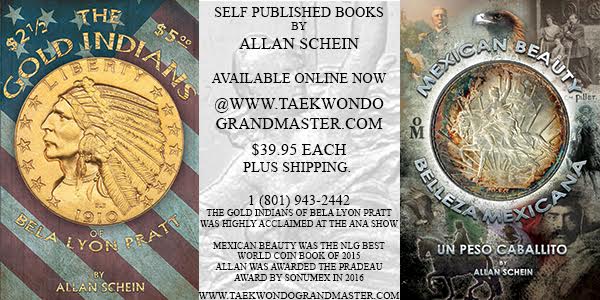
NEWMAN PORTAL SCANS BUNYAN’S CHIPS
The Newman Portal has scanned Bunyan’s Chips, the journal of the International Organization of Wooden Money Collectors (IOWMC), for the period 1964-2016. The inaugural issue stated “there are wooden nickels being issued constantly and it is humanly impossible for any one person to get a list of all of them.” Even with the power of the Internet and billions of users, this statement rings true even today. The best that can be done is to connect wooden money collectors, publish their collections and latest findings, and let the trading commence. The IOWMC group has done precisely that for over half a century. The group’s publication can further boast of one of the best named columns in a numismatic periodical, namely the president’s remarks in each issue, which appear under the title “The Wood Pile.” Many thanks to Darrell Luedtke, Bunyan’s Chips editor, for assistance with this project.
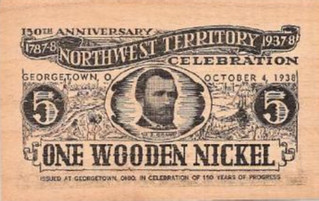
Link to Bunyan’s Chips on NNP:
https://nnp.wustl.edu/library/publisherdetail/514388

NOTES FROM E-SYLUM READERS: OCTOBER 2, 2016
Conder Tokens and Other Topics
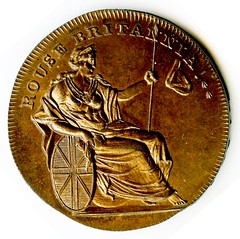
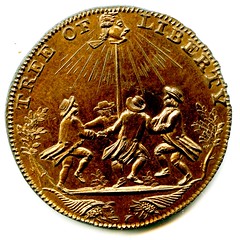
Dave Bowers writes:
Very nice issue. I love Conder tokens! Someone should write a book about Thomas Spence! Emery May Holden Norweb collected books with fore-edge paintings. I enjoyed several she showed me in the family NYC home in River House. The coverage of PAN is impressive.
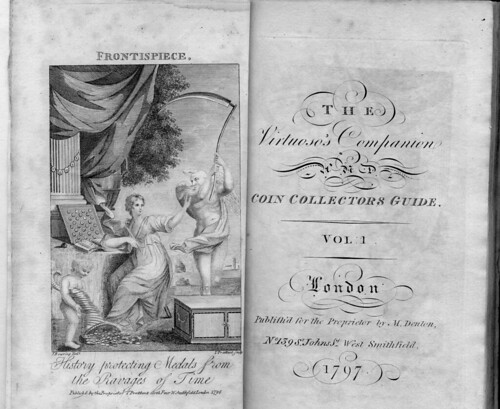
To read the earlier E-Sylum articles, see:
FEATURED
WEB SITE: CONDER TOKEN COLLECTOR'S CLUB
(www.coinbooks.org/esylum_v19n39a45.html)
FORE-EDGE
PAINTING (www.coinbooks.org/esylum_v19n39a31.html)
FALL
2016 PAN SHOW SPEAKERS ANNOUNCED
(www.coinbooks.org/esylum_v19n39a12.html)
Caesar the Elephant
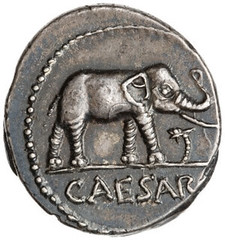 David Pickup writes:
David Pickup writes:
In 1980 (roughly) I bought a Caesar denarius with the elephant. It was found in a place called Orsett in Essex. I was interested to read that the word “caesar” in Punic means elephant so it is a Punic pun.
To read the earlier E-Sylum article, see:
COINS OF
JULIUS CAESAR (www.coinbooks.org/esylum_v19n39a34.html)
More on the COYN Press
Last week George Cuhaj wrote:
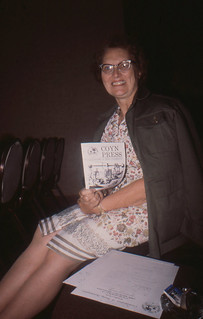 In the early 1970s there was a group called the Junior
Numismatic Correspondence Club of America. When I was involved in
it from 1974-77 they were publishing a mineograph type bi-monthly
newsletter with YN authored articles and drawings. I met many of
the group at the YN meetings during the ANA New York show. Lorry
Kiessing, Larry Hample, and Paul Johnson (Now RCNA executive
director) were all early members of the group.
In the early 1970s there was a group called the Junior
Numismatic Correspondence Club of America. When I was involved in
it from 1974-77 they were publishing a mineograph type bi-monthly
newsletter with YN authored articles and drawings. I met many of
the group at the YN meetings during the ANA New York show. Lorry
Kiessing, Larry Hample, and Paul Johnson (Now RCNA executive
director) were all early members of the group.
As YNs tend to grow up and rotate out, its successor group was called the Confederation of Young Numismatists (COYN) which published COYN Press for a few issues.
To read the earlier E-Sylum article, see:
TWO
NUMISMATISTS EXCHANGE CORRESPONDENCE
(www.coinbooks.org/esylum_v19n38a07.html)
Another Captain Cook Resolution and Adventure
Medal
Gene Anderson writes:
I enjoyed the brief discussion about the Resolution and Adventure medal of Captain Cook the past two weeks in the E-Sylum. I have an article that should be published in the November issue of The Numismatist about this medal. It was great fun doing the research.
One of the best articles I came across was written by Peter Lane and published in the April 2009 issue of the Journal of the National Museum of Australia. He lists 21 recovered medals: Bruny Island (1), New Zealand (11), Tahiti (2), BoraBora (1), Vanuatu (1), Society Islands (2) New Caledonia (2), and Canada (1). The key players in this drama, James Cook and Joseph Banks, are such interesting people. Attached are pictures of my example.
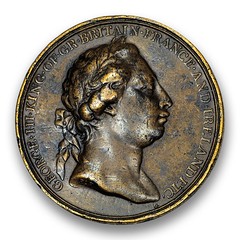
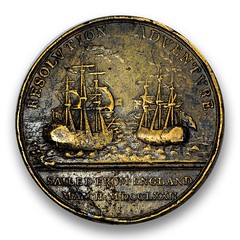
To read the earlier E-Sylum article, see:
NOTES
FROM E-SYLUM READERS: SEPTEMBER 25, 2016 : More on Captain Cook’s
Resolution and Adventure Medal
(www.coinbooks.org/esylum_v19n39a16.html)
Antony Macaroni and the Barter Street Bookshop
Tom Sheehan writes:
I saw this while in Edinburgh. Tony Macaroni used an image of Antony from a Roman coin in the sign. We were there during the "Fringe Festival".

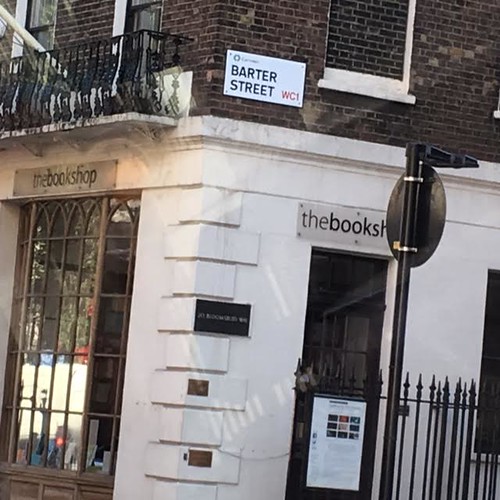
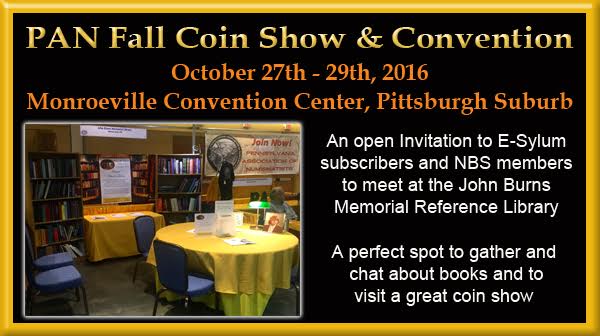
MORE ON MINT ENGRAVER ENGELHARDUS VON HEBEL
Web site reader Gerard (Gerhardus) von Hebel writes:
I saw the web site article in which Dick Johnson wrote about the engraver Engelhardus von Hebel. He noted that he was born in Germany in 1892. Engelhardus (or Engelhardt) was my great-uncle (my grandfather’s brother) and he was born in the Netherlands in the city of Groningen. The surname sounds unmistakably German, but the family had been resident in the Netherlands for about three generations at the time of his birth.
I personally never knew him, but I still own a letter he sent from the USA to my father. Engelhardus was also a sculptor who participated in the sculpting of the facades of the building of the Groningen Provincial Authority “Provinciehuis” in the second decade of the 20th century. I include a picture of that building (where I once worked).
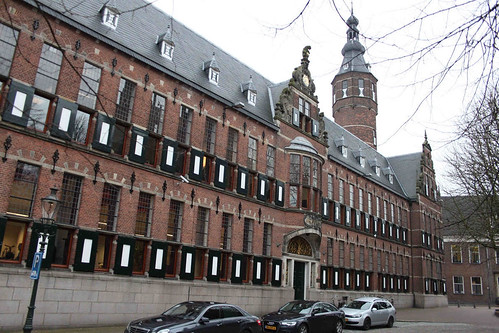
To read the earlier E-Sylum article, see:
U.S.
MINT ENGRAVER ENGELHARDUS VON HEBEL
(http://www.coinbooks.org/esylum_v17n49a17.html)
QUERY: A COLONIAL COUNTERSTAMP MYSTERY
I'm wanting to solicit the thoughts of our learned E-Sylum readers as regards the two counterstamped coppers, pictured below. Acquired separately, I've had them for many years now. The smaller piece is about the size of a British halfpenny, and the second coin is a Connecticut cent.
While Brunk does not as yet list the smaller piece, he does list the Connecticut cent; this, in addition to the same counterstamp on a 1788 Vermont cent (Brunk # P-14). I would note that there is a slight error in the Brunk listing; this, being the addition of a second period or stop, following the letter C. The counterstamp actually appears as: B / D.CP The smaller piece is quite worn, and that stamp may be either: B / CVN or B / C.VN
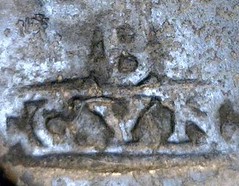
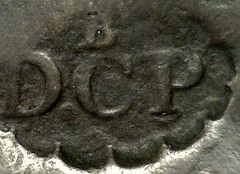
Closeups: B / C.VN and B / D.CP
Dr. Brunk noted that, in marks such as these, the initial letter, B (on both coins here), typically represented a town. He logically surmised that the P-14 issues emanated from New England.
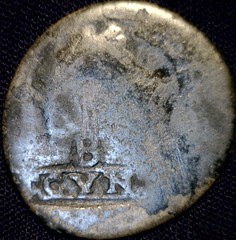
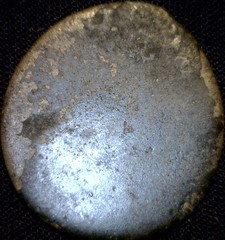
Counterstamped British Halfpenny
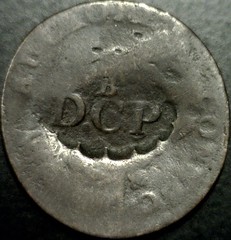
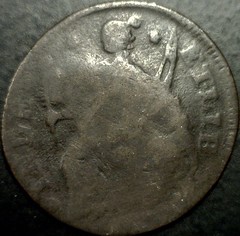
Counterstamped Connecticut Cent
Given the similar style of my two pieces, perhaps they were from the same town ... Boston?
Although the P-14's are listed as merchant tokens by Brunk, these are quite different. I've long been struck by their similarity in style to the Albany Church Penny. Might these have been used as Church Pennies as well? I long ago mused that the D.CP might stand for "Dutch Church Penny" or perhaps, something similar?
Well, having labored over this puzzle for a few decades now, I've decided to see if someone else can attribute either or both of these curiosities. Readers, have at it!
To read the earlier E-Sylum articles, see:
QUERY:
ALBANY CHURCH PENNY INFORMATION SOUGHT
(www.coinbooks.org/esylum_v15n38a12.html)
ALBANY
CHURCH PENNY RESEARCH FOLLOWUP
(www.coinbooks.org/esylum_v10n02a18.html)

BENNO LOEWY (1854-1919)
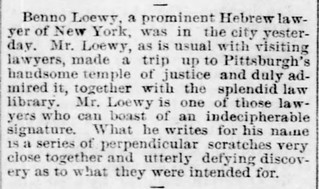 Benno Loewy (1854-1919), was born in Berlin, Germany on
14 June, 1854, of Jewish parents, his father Adolph Loewy, a
Rabbi. He moved to America with his family in 1866 and settled in
New York City and lived at 296 Ninth Avenue. He attended Public
School No. 19. He graduated City College (now C.U.N.Y.) B.A.
1873, and continued earning a Law degree from Columbia
University, Law School, L.L.B., 1874. In 1875 he was admitted to
the Bar. He was a highly respected attorney who specialized as a
trial lawyer. He was active in arts and entertainment, an
aficionado of the theatre and writer, active in the Freemasons
and numismatics, and a bibliomaniac. According to his 1912
Passport Application description he was 5'-5" with brown
and white hair.
Benno Loewy (1854-1919), was born in Berlin, Germany on
14 June, 1854, of Jewish parents, his father Adolph Loewy, a
Rabbi. He moved to America with his family in 1866 and settled in
New York City and lived at 296 Ninth Avenue. He attended Public
School No. 19. He graduated City College (now C.U.N.Y.) B.A.
1873, and continued earning a Law degree from Columbia
University, Law School, L.L.B., 1874. In 1875 he was admitted to
the Bar. He was a highly respected attorney who specialized as a
trial lawyer. He was active in arts and entertainment, an
aficionado of the theatre and writer, active in the Freemasons
and numismatics, and a bibliomaniac. According to his 1912
Passport Application description he was 5'-5" with brown
and white hair.
While a college student at City College he published, The Truth About Love : A Proposed Sexual Morality Based upon the Doctrine of Evolution, and Recent Discoveries in Medical Science. (New York, 1872)
On 27 February 1883 he married American born of Austrian parents, Isabelle "Belle" Kohler (1859-1944), at the Hotel Brunswick, New York. As a young lawyer in the 1870's he was a champion of equal rights for women and their right to vote, which became realized after his demise.
He was a member of B'nai B'rith, the Free Sons of Israel and various Jewish charities. He became the President of the B'nai B'rith Lodge No. 19, also the Free Sons of Israel Aryeh Lodge No. 6. From 1893 he became a Freemason at National Lodge No. 209, and was an avid collector of Masonic literature, medals, tokens, pennies, badges and insignia. He also served as High Priest at the Crescent Chapter No. 220, and served on the Adelphic Council. In 1905 was made the Grand Master being a 33 degree Master of the Scottish Rites and represented the Lodge of Hamburg, Germany in New York.
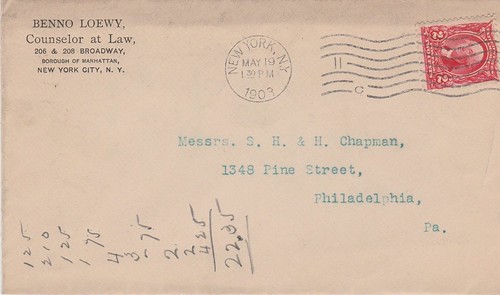
Benno Loewy was an avid collector of Masonic numismatic material and frequently corresponded with the Chapman Brothers beginning in Spring of 1903. He became a member of the ANS in 1903, and also the ANA in October 1905. With William Poillon, and Dr. W. T. R. Marvin he was the editor on Masonic Medals and Tokens for the American Journal of Numismatics. He also donated Masonic Mark Pennies and Medals to the ANS collection in 1907.
In 1905 Loewy published a Bibliography on Masonic Medals and Badges, and included Chapter or Mark Pennies.
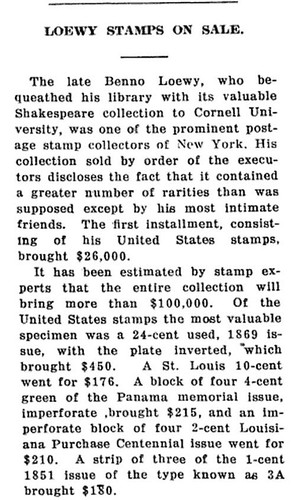 In October 1913 he exhibited over 100 rare postage
stamps valued over $30,000 at the New York International Stamp
Exhibition held from October 27-November 1, 1913 at the
Engineering Societies Building, East 40th Street, New York City.
Loewy and Col. E. H. R. Green were steady clients of American
Philatelic Society Hall of Fame dealer, auctioneer, and
specialist on postmarks, Percy Gray Doane (1877-1945) .
In October 1913 he exhibited over 100 rare postage
stamps valued over $30,000 at the New York International Stamp
Exhibition held from October 27-November 1, 1913 at the
Engineering Societies Building, East 40th Street, New York City.
Loewy and Col. E. H. R. Green were steady clients of American
Philatelic Society Hall of Fame dealer, auctioneer, and
specialist on postmarks, Percy Gray Doane (1877-1945) .
He was killed on 19 August in New York City being hit by a truck near his home at 22 West 88th Street. Rabbi Joseph Silverman of Temple Emmanuel officiated at his funeral at Loewy's home. He is buried in Salem Fields Cemetery, Brooklyn, New York.
To read the complete article, see:
LOEWY, BENNO
(https://sites.google.com/a/numismaticmall.com/www/numismaticmall-com/loewy-benno)
THE BOOK BAZARRE
FARRAN ZERBE (1871-1949)
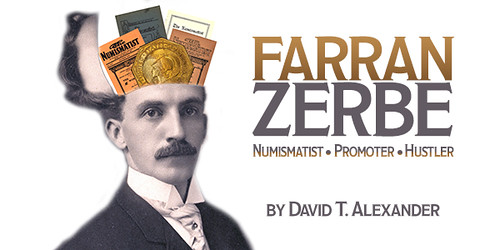
Collecting in small towns and rural areas could only flourish after Rural Free Delivery expedited the mail and until the expansion of America’s railroads linked the hinterland to the urban centers. This was the hour of what historian John Kleeberg calls the “small-town intelligentsia”: doctors, dentists, lawyers and clergymen began to discover numismatics and spread appreciation of coin collecting across the map.
While the [American Numismatic Association] was taking shape, an up-and-coming youngster had begun his epic numismatic career as a newsboy in the small industrial city of Tyrone in south-central Pennsylvania. Joseph Farran Zerbe was born April 16, 1871 to James Albert and Bridget Mary (née McAvoy) Zerbe. The Zerbe family was reasonably prosperous though by no means wealthy, and a public school education equipped the boy for the world.
Dropping the “Joseph” early in life, Farran was soon at work as a paper carrier for the Tyrone Daily Herald in 1880-1889. One fine day in 1882 a customer fobbed off on the unsuspecting youth a French silver 50-centime piece as a dime, launching his lifelong interest in foreign coins.
According to the March 1900 issue of The Numismatist, he was soon conducting a varied retail business in his native Tyrone as “Coin” Zerbe, offering all kinds of necessaries or variety goods at his store as well as coins through the mail.
Zerbe developed an interest in numismatic writing despite an inadequate education in the English language that persisted throughout his career. In 1899 he published a slim pamphlet, “Just What You Should Know, Nut Shell Facts on Coins, Stamps & Paper Money”, that is today a major rarity. He joined the ANA in 1900 and the March 1900 issue of The Numismatist noted his business name of Coin Zerbe in Tyrone in its review of American coin dealers.
From 1900 until the late 1920s, Zerbe played several roles on the numismatic stage: coin dealer, ANA leader and publisher, exhibitor-showman, writer, and later curator of a nationally publicized museum in New York City. Frequently these roles overlapped and generated varying degrees of controversy.
To read the complete article, see:
Farran Zerbe: Numismatist – Promoter – Hustler
(www.coinweek.com/people-in-the-news/numismatic-personalities/farran-zerbe-numismatist-promoter-hustler/)
TOKEN AND MEDAL DEALER JOHN WHITMORE
Paul Withers writes:
John Whitmore had been a friend for for half a century. I compiled the following from the eulogy given at his funeral, Garry Charman's obituary in Coin News and personal knowledge. John introduced me to Garry at a coin fair in Cheltenham in - I'm not quite sure when, but it was probably around 1970.
John Whitmore passed away on the 7th of August 2016 at the age of 84, surrounded by his family, after a short illness. He is survived by his wife and two daughters.
In 1969 John and his wife Stella turned what had been a hobby into a full time business, initially trading under the name of 'Lickey Coins'.
Most collectors will be familiar with the later Whitmore sales lists, issued from 1983 onwards after their move to Malvern. He had extensive knowledge of both tokens and commemorative medals. His interest, especially in pub checks and unofficial farthings, led into numismatic research and the publication of several works including 'The Token Collectors Companion', which is used by many collectors.
His numismatic knowledge covered many areas including world coins and historical medals.
John, before he became a coin dealer had been a senior tax inspector, which enabled him to lead the discussions with the Treasury for the BNTA, the British Numismatic Trade Association, as he was an expert in speaking and understanding officialese and the civil service mind.
He was influential in the development of the association, serving on its council, many of its committees and for many years was its honorary treasurer. In 1999 he was granted honorary life membership, one of only four people to be so honoured in the forty-three year history of the organisation. His interests, apart from coins, were varied and included classical music, cricket, sci-fi and ornithology, and woe betide anyone who rang him when the Archers programme was on the radio in the evening. He and Stella enjoyed visiting places to see the interesting fauna and flora, both in Britain and abroad.
His general knowledge was amazing. If you asked him a question on any subject, he would come back with an answer. On the odd occasion when he could not, he would say he was not sure, but said what he thought the answer might be. On checking he was invariably correct! He would have been the perfect ‘friend to phone’.
The numismatic world is richer because of his contribution and we are all poorer for his passing, but those who met him will remember him with pleasure.
For more information on Coin News, or to subscribe, see:
http://www.tokenpublishing.com/coins.asp

ERNEST HEMINGWAY AND NUMISMATICS
Joe Esposito writes:
Dave Harper published an article that I wrote on Hemingway and numismatics in the September 20, 2016 issue of Numismatic News under the headline “Hemingway gets his numismatic due.” It is an interesting article. It is not available digitally, but I posted it on my history blog.
It has been 55 years since the death of Ernest Hemingway, one of the great writers of the twentieth century. On July 2, 1961, Hemingway, suffering from serious physical and mental problems, committed suicide in Ketchum, Idaho.
I have been studying Hemingway in connection with other research. In the process, I have come across several coins and medals that honor him and well as some other numismatist connections. Cuba, where the author lived for twenty years and had ties for much longer, has issued four Hemingway coins.
Hemingway loved Cuba and the Cuban people, and he was treated as a celebrity. He had a grim view of Castro’s predecessor, Fulgenico Batista, and was hopeful that Fidel Castro would improve the lot of the Cubans. Castro later seized Hemingway’s house, nine miles outside of Havana, and today it is a shrine owned by the government.
Three of the Cuban coins were issued in 1982: a silver five-peso with Hemingway’s image on the obverse along with his life dates; a five-peso which paid tribute to his Nobel Prize and The Old Man and the Sea novel (there is an image of a fisherman, presumably “Santiago,” in the small boat on the reverse); and another five-peso coin with Hemingway’s fishing boat, Pilar, on the reverse.
The fourth, and perhaps the most interesting, coin is a 2010 Cuban five-peso copper with Hemingway and Castro on the reverse. It commemorates the fiftieth anniversary of the only meeting between the two men. Castro participated in Hemingway’s marlin fishing tournament, and won.
Elsewhere in the region, Jamaica issue a seven-coin proof set in 1994, and one of the coins was a five-dollar Hemingway coin with the image of the author and the fisherman on a boat in the water.
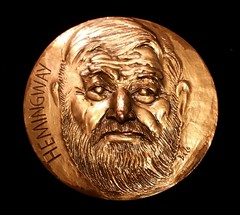 But for me the most noteworthy numismatic item of
Hemingway is an 81-mm bronze medal produced by the French-Spanish
medalist Andre Belo. It has an obverse portrait of Hemingway and
an impressionistic account of Santiago, the old fisherman,
struggling to reel in a marlin on the reverse. The legend in
lower-case letters: “le vieil homme et la mer” [the old man and
the sea].
But for me the most noteworthy numismatic item of
Hemingway is an 81-mm bronze medal produced by the French-Spanish
medalist Andre Belo. It has an obverse portrait of Hemingway and
an impressionistic account of Santiago, the old fisherman,
struggling to reel in a marlin on the reverse. The legend in
lower-case letters: “le vieil homme et la mer” [the old man and
the sea].
A copy of this medal sits in my office, sometimes offering inspiration for writing. Although certainly not rare, it is one of my favorite medals. It was issued in 1976 by the Monnaie de Paris (Paris Mint).
Among other works by Belo, who was born in 1908, are medals of composer Henri Sauguet, literary critic Charles Sainte-Beuve, musician Erik Satie and writer George Sand (Amantine-Lucile-Aurore Dupin)--all French--as well as “The Afternoon of a Faun.”
There are some other interesting items related to Hemingway and numismatics. He received the Nobel Prize for Literature in 1954 and donated his gold medal to a provincial Cuban Catholic church. The medal was stolen in the 1980s, but was recovered and is now closely held by the Catholic Church.
To read the complete article, see:
Ernest Hemingway and Numismatics
(www.ghostofherodotus.com/2016/09/ernest-hemingway-and-numismatics.html)
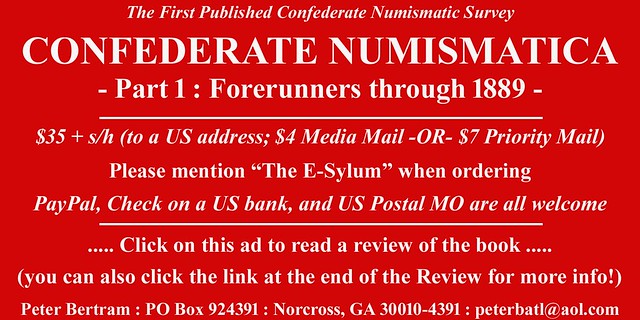
BONHAM'S SELLS ECKFELDT-DUBOIS GOLD SAMPLE BOOK
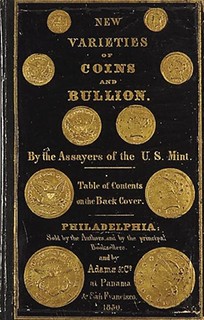 An 1850 numismatic book related to the California Gold
Rush sold for $10,625 on Sept. 21 as part of Bonhams’ Fine Books
and Manuscripts auction in New York City.
An 1850 numismatic book related to the California Gold
Rush sold for $10,625 on Sept. 21 as part of Bonhams’ Fine Books
and Manuscripts auction in New York City.
New Varieties of Gold and Silver Coins, Counterfeit Coins, and Bullion; with Mint Values by Jacob Reese Eckfeldt and William E. Du Bois, was published by the authors in Philadelphia and sold both in Philadelphia and through the agencies of Adams & Co. in Panama and San Francisco. It’s considered a key reference book documenting the start of gold mining in California and the Gold Rush and helped supplement an earlier book by the authors published in 1842.
The cover is beautiful, with embossed gold-tone coins reproducing contemporary circulating U.S. gold coins including the new Coronet double eagle, which was introduced for circulation in 1850. The book includes a leaf of “California and Mormon Coins” embossed in gold.
The lot at Bonhams was noteworthy for being in the former collection of Henry E. Huntington, the American railroad magnate and collector of rare books who today is perhaps best known through the Huntington Library, Art Collections and Botanical Gardens on his former estate at San Marino, near Pasadena.
The authors were assayers for the Philadelphia Mint and the book was intended as a guide to familiarize readers with new developments in the field, specifically with the discovery of gold in California. It goes beyond official U.S. Mint issues and pioneer gold issues to include various world coins including Chinese coins.
The book is well-known for its colorful language on contemporary Chinese coins. Writing on the Chinese cash coin the authors state, “The trashy coin of this great empire deserves notice only by way of recreation,” noting, “so hard is it to fasten a value upon that which is valueless. A carpenter or tailor, we are told, receives 160 of them (say thirteen cents) for a day’s work; of which sixty are required for the daily bread. The coin is extremely convenient for alms-giving, a single piece being the usual quietus for a beggar.”
Adding to the book’s desirability is the inclusion of samples of California grain and bar gold on page 45, mounted below a mica disc. The intent of including the gold was to help readers distinguish between alloyed and unalloyed gold.
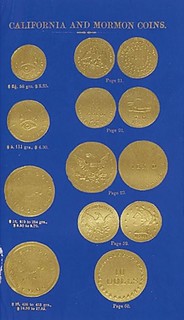
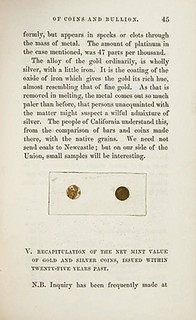
To read the complete article, see:
Book with special content linked to California Gold Rush brings
high price
(www.coinworld.com/news/us-coins/2016/09/book-linked-to-california-gold-rush-realizes-huge-price.html)
Numismatic books have been leading the news recently. In the past month, the newly released fifth edition of Q. David Bowers’ A Guide Book of Morgan Silver Dollars sold out almost immediately. Whitman publisher Dennis Tucker explained: “Part of the strong demand for this edition comes from the recently revealed discovery of hubs, dies, and models for a 1964 Morgan dollar. This exciting announcement was made in late August, and demand for the book skyrocketed in September.” The book features on its cover the photograph of a hub for the 1964 Morgan dollar, with more photographs and details of the discovery inside. Since the existence of models, hubs and dies for an 1964 Morgan dollar were unknown until the book was announced, collectors were eager to share in this exciting news by purchasing a copy. (And Dennis promises that thousands more copies of the book will be available soon.)
Numismatic literature can inspire, inform, educate and, on some occasions, give bad advice. For collectors, a good library is a vital tool in their hobby.
Read any good books lately?
NUMISMATIC LITERATURE EXCITEMENT REIGNS WITH A SALE AND A SELLOUT (www.coinworld.com/voices/bill-gibbs/2016/09/numismatic_literatur.html)

GEORGE HAYLINGS: A NO-PROFIT COIN PROPHET
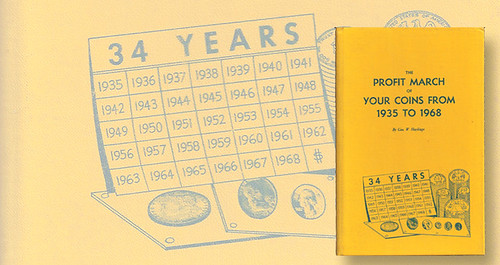
Last month, we discussed the first book written about speculating in — as opposed to collecting — U.S. coins, A Guide to Coin Investment (published in 1957), and its estimable author, Dr. Robert Bilinski. This month we meet the man once described as Bilinski’s “evil twin,” the author of The Profit March series on coin investment, the Barnumesque George Haylings.
Mr. Haylings left Detroit for California during the Great Depression, and shivered through two years living in a tent until he discovered, as one of his book titles put it, 125 Ways to Make Money with Your Typewriter. Haylings turned out a series of how-to-earn-a-quick-buck books, including two with chapters advising readers to invest in coins: Hidden Dollars (1947) and Vacations Unlimited (1952). By 1960, the long postwar bull market in coins inspired Haylings to write The Profit March of Your Coins from 1935 to 1968.
Dr. Bilinski had extensively researched the coin market and used data to make conservative projections of future price performance. Haylings’ methods combined hype, uncritical extrapolation of past results, and wildly optimistic predictions. There were a million coin collectors in 1954, 3 million in 1960, and would be 5 million in 1966. In the go-go coin market of the early 1960s, Haylings looked like a prophet.
In 1964 he wrote The Profit March of Your Coin Investment, 1935–1971, twice as long as his first Profit March, and 10 times as enthusiastic about speculating in coins: “… the most astounding investment to be found on earth today!” Now he predicted that soon there would be 20 million coin collectors!
Haylings crowed that rare coin prices had risen “… over the past 29 years, with all indications that the same relentless increase in prices will go right on for the next 29 years.” The stretch from 1964 to 1993, however, proved a roller coaster for the rare coin market, with three boom periods and three busts, starting with a market meltdown in 1966.
This explains why so many of Hayling’s 1964 profit predictions for 1971 were laughably lousy. Four examples:
1942-S Lincoln cent — Haylings’ prediction: $2,315 per roll. Actual: $125.
1937 Proof set — Haylings’ prediction: $1,390. Actual: $350.
1952-D Jefferson 5-cent coin — “The sleeper of all time, in my opinion.” Haylings’ prediction: $2,175 per roll. Actual (still sleeping): $87.
1950-D 5-cent coin — “The king of all rolls! Number one on the ‘top’ list! Without a doubt the gilt-edged security in the coin investment field. I am predicting that the price will be $10,000 per roll … in 1971, 157 times the 1954 price!” Actual: less than $50 per roll. Did Haylings eventually feel guilty for calling it “gilt-edged”?
He wrote another Profit March book in 1964, focusing on Indian Head 5-cent coins and small cents. Eventually, however, readers realized that profits were marching to Mr. Haylings, but not to them, and demand for his investment guides evaporated.
The Profit March series still provides unintentionally hilarious reading. Haylings’ pie-in-the-sky predictions offer endless chuckles, but don’t overlook his coin care suggestions. In the last-named book, he recommends tumbling Uncirculated coins in powdered stearic acid and rubbing them with a chamois cloth before putting them into a plastic storage tube. Kids: DO NOT try this at home!
To read the complete article, see:
George Haylings was a prophet who was wrong on coin
investments
(www.coinworld.com/news/us-coins/2016/09/investment-book-authors-advice-was-not-so-good.all.html)
THE BOOK BAZARRE
THE HIBLER-KAPPEN SO-CALLED DOLLARS BOOK
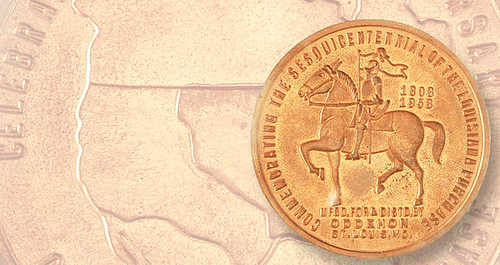
Collecting of U.S. medals prior to the 1970s suffered from the lack of comprehensive and reliable catalogs.
A key volume was issued by Coin & Currency Institute of New York. The 156-page hard cover So-Called Dollars by Californians Harold E. Hibler and Charles V. Kappen was released in 1963.
The term “so-called dollars” was used in the 1950s by Richard D. Kenney to describe medals of the approximate size of a U.S. silver dollar. Hibler and Kappen vastly extended his listing and boosted a distinct collecting area.
Neither author had the depth of knowledge really needed for this ambitious book, but it became important simply because it existed and filled an enormous gap. It presented whatever information was at hand, publicizing hundreds of medals that gained importance simply because Hibler and Kappen included them. Many obscure events and mysteries were brought to light that called for in-depth research.
Among these was HK-509, the 1953 Louisiana Purchase Sesquicentennial medal, a 41.5-millimeter plain-edge piece struck by the Adams Company for old-time St. Louis coin dealer Otto Oddehon.
We now know that the Oddehon medals were also struck in bronze, silverplate and brass. They really, if unknowingly, commemorated the death of the world’s fair movement.
To read the complete article, see:
What links St. Louis numismatist Otto Oddehorn to the Louisiana
Purchase?
(www.coinworld.com/news/us-coins/2016/09/saint-louis-coin-dealer-issues-exposition-medal.html)

BEBEE BUYS A BANK BUILDING: COIN SHOPS IN AMERICA
In 75 years of collecting coins I have visited, if not hundreds, at least dozens and dozens of coin shops and coin dealers in the Eastern half of the United States. I recall the dealer and the type of shop he had, if not what I bought at each.. Most were street level stores. some occupied offices In larger city high rise buildings
Often my conversations over-the-counter with the dealer led to an invitation to the back room, an inner sanctum of numismatics. One of these was Art Kelley of St. Louis. In a shop filled with dusty antiques the showcase of coins lined one wall. Coin business was most often conducted in the back room where the coffee pot was always hot. If two people showed up at the same time you couldn’t talk to the other person. Gruff old Kelley demanded you only talk to him. He would berate any person who dared speak to another.
It seems the larger the city the smaller the shop, with some exceptions. After all that was needed was one showcase and a safe. Contrast this with some more elaborate and decorated emporiums. Silvertown in Indiana, holds the record for the most elaborate I visited. It is the Coin Castle of America. Two stories tall, winding staircase, showrooms, and, of course, the backroom. It wasn’t long befor the Hendricksons, father Leon and son David, invited me back to the work area. They delighted in showing me two bound volumes of the first issues of Coin World, most of which was when I was editor.
New York City dealers were almost always in high-rise office buildings. Bob Friedberg’s Coin & Currency Institute was in a high rise across the street from Macy’s where he had a first floor coin department. Hans Schulman was also in a midtown building, filled with odd and curious money and lots of books.
Since mail order is a large part of coin dealing, many dealers eschew shops to operate out of their home. Look at the ads in The Numismatist 60 years or more - most were their home addresses. In modern times you could even operate out of a warehouse and some did.
My blue ribbon here goes to Harry Forman. He found a building hidden behind a Post Office. A large room was where he and his longtime assistant Ruth Bauer worked, This was adjacent to a storeroom with shelves where you could find most anything related to numismatics. But you had to find the hidden driveway to that hidden building.
Longtime coin dealer Aubrey Bebee found the most ideal location. After years in South Chicago he bought a former bank building in Omaha, Nebraska with a walk-in safe. Now that was protection plus accessibility!
As a youth I shopped at a Kansas City Missouri coin dealer, Wilbur Bishoff. His backroom was his bedroom. He lived in his coin shop.
Modern times bring modern coin shop locations, notably the shopping mall. Some have given up this ideal location, with its inherent problems, and moved back to the home office. Joe Levine did this for his Presidential Coin and Antique company in 2005.
With the increasing number of coin shows and conventions, plus the burgeoning power of the internet and eBay it doesn’t matter any more where you conduct coin business. After all, even a coin shop with the best ambiance, it’s still the bargains inside that attract collectors.
Elsewhere in Pittsburgh was the tiniest shop I've ever been in. Run by Gordon Dodrill, it was located off the lobby of a Smithfield Street office building, tucked under a stairway in what must have been designed as a broom closet. There was room for a counter, but only enough room for one or two people to stand in front of or behind it. I remember some odd and curious money decorating the walls, including a creepy mounted and framed elephant tail.
I asked some of my old Pittsburgh coin friends to confirm my memories. -Editor
Larry Dziubek writes:
When I visited Addison Smith a couple of times Bill Ross was there with his cigar just chatting.
Dodrill- The Pittsburgh Coin Co. had a safe, a desk and two chairs behind the counter. Dodrill relocated from a spacious shop on the 2nd floor across the street in the Park Bldg. The elephant tail was there also, which fit his style of the best place to find “foreign” coins.
Larry Korchnak writes:
Ted Young [Young's Coins] works out of a triangle shaped building in Rochester, PA that was once the Rochester National Bank, I believe. It has an impressive original brass railing on the mezzanine.
Larry Dziubek adds:
I can’t remember the location of the vault. I don’t think the public could enter, only the staff.
Pat McBride writes:
The place is always busy. It is like a bakery on Saturday morning. Ted still does the PAN show. Ted and son Rick bring a hundred huge cinnamon rolls on Friday morning for all the dealers.
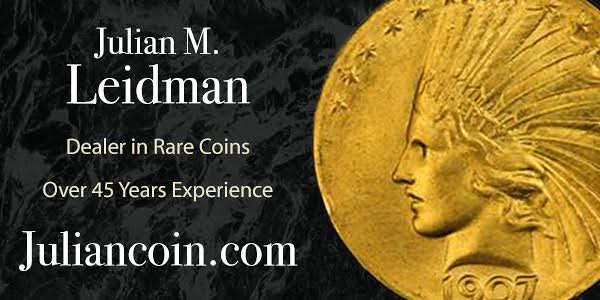
PODCAST: JON ALAN BOKA'S 1794 CENTS
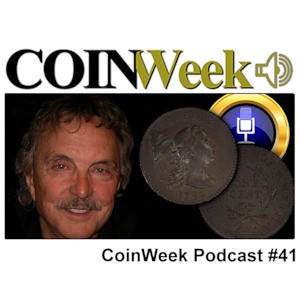 The 1794 Cent has puzzled and excited early copper
specialists for more than 150 years. With more than 50 varieties
deemed “collectible” by Dr. William Sheldon, specialization in
this issue requires patience, a great degree of skill, and
significant financial resources.
The 1794 Cent has puzzled and excited early copper
specialists for more than 150 years. With more than 50 varieties
deemed “collectible” by Dr. William Sheldon, specialization in
this issue requires patience, a great degree of skill, and
significant financial resources.
In this episode of the CoinWeek Podcast, we speak to Jon Alan Boka, collector and webmaster of 1794cents.com about his recently sold collection, which will long be remembered as one of the finest ever assembled.
To read the complete article, see:
CoinWeek Podcast #41: Jon Alan Boka’s Incredible 1794 Cent
Collection
(www.coinweek.com/coinweek-podcast/coinweek-podcast-41-jon-alan-bokas-incredible-1794-cent-collection/)
$5 RICHMOND, VA PANIC OF 1893 NOTE
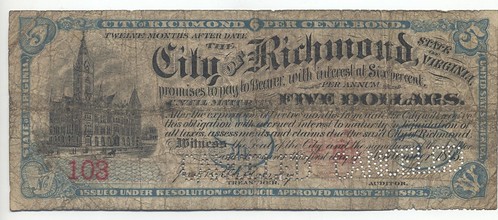
This past weekend, the Virginia Numismatic Association held its annual convention and show in Fredericksburg and I went there to meet with several paper money and token collectors to collect images for some writing projects I have in the works.
While there, I walked the floor a bit and made a find that relates to The E-Sylum in a way. A couple years back, I sent an image of a Panic of 1907 Lynchburg note that I brought to a Nummis Nova meeting and made the comment that my next goal was to find a Panic of 1893 note from Virginia. Sure enough, Wayne put me in touch with a kind reader who happened to have an example of 1893 $10 Richmond scrip issue available and was able to purchase it.
After the Shafer-Sheehan-Reed book on Panic scrip came out, I became aware that there was a $5 denomination of that scrip, which the Richmond government referred to as "city bonds" since they were interest bearing. It was rated an R5, and I did not expect to see one anytime soon, let alone get one. Well, at the VNA Convention, I found just such a note and was able to snag it at a very good price. It's not the prettiest example, but considering its rarity, it doesn't matter one whit (to me, at least).
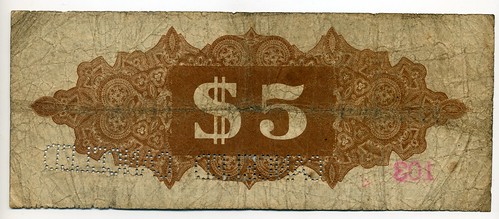
CABARRUS COLLECTION OF CONFEDERATE PAPER
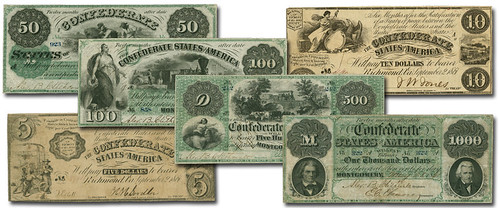
The currency team at Stack’s Bowers Galleries is pleased to offer a wonderful collection of Confederate paper money in our Official Currency Auction of the Whitman Coin and Collectibles Winter Expo this November. The Cabarrus Collection was assembled by a private collector over the course of nearly a decade and features a number of rare and highly desirable type notes including the “Big Six” notes vigorously sought by collectors.
More than 70 lots from the Cabarrus Collection will be featured and among the highlights are the four Montgomery issues. The T-1 1861 $1000 from the collection is a moderately circulated and well cut note graded Apparent Very Fine 30 by PCGS with repaired cross-cut cancellations (lot 10129). It is estimated to sell for $25,000 to $35,000. The collection’s T-2 1861 $500 is a brilliantly colored note that displays just light circulation and bold inks (lot 10130). PCGS has graded the note Apparent Very Fine 30 with mention of restored punch cancellations and redrawn areas of the design. This example also carries a pre-auction estimate of $25,000 to $35,000.
Collectors will be drawn to the T-3 1861 $100 that displays beautifully printed inks and bright clean paper (lot 10131). That note is graded PCGS Apparent Very Fine 35 with mention of small repairs at the center of the note. It is expected to sell for $15,000 to $25,000. A nearly uncirculated T-4 1861 $50 will also be offered (lot 10132). The lightly handled and boldly colored $50 has been graded Apparent About New 50 by PCGS with mention of repair in the upper right corner that has proven extremely difficult to detect. That note carries a $15,000 to $20,000 estimate.
Among other rare types is the T-27 1861 $10 (lot 10173). The example from the Cabarrus Collection is boldly printed on bright paper and has been graded Very Fine 30 Net “Repaired” by PMG. It has two cut cancellations which are closed by archival tape on the back. The note is a scarce PF-2 variety from the A11 plate. It carries a pre-auction estimate of $8,000 to $12,000.
Confederate currency enthusiasts will also be interested in the rare T-35 1861 $5 Indian Princess (lot 10183). The note comes nicely printed for the type with bold details. PCGS has graded the note Apparent Very Fine 25 with mention of restorations on back. Those restorations are fairly minor and appear to negate out mounting remnants. The note is estimated at $20,000 to $30,000.
The many great notes found in the Cabarrus Collection will be available online for viewing and bidding soon. The Stack’s Bowers Galleries Official Currency Auction of the Whitman Coin & Collectibles Winter Expo will be held November 2-4, 2016, at the Baltimore Convention Center in Baltimore, Maryland.
To read the complete article, see:
Cabarrus Collection of Confederate Paper Money to be Offered in
Stack’s Bowers November Baltimore Auction
(www.stacksbowers.com/News/Pages/Blogs.aspx?ArticleID=2274)
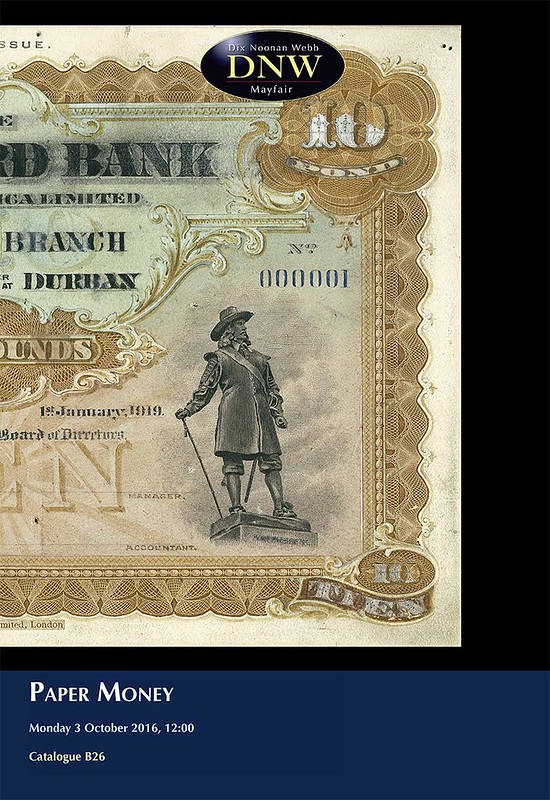
SHOW PROMOTION IDEA: OVERSTAMPED DOLLAR BILLS

Good ideas should be copied.
The most interesting one I have seen recently is a promotional effort by the Hawaii State Numismatic Association.
It is based on an old idea of spending rare coins into circulation in hopes someone will find them.
Instead of old coins, the Hawaiian organization spent 100 specially marked $1 bills into circulation.
These are more likely to be encountered in change by average people.
However, even with the number of $1 bills spent, only two were found. They were redeemed Sept. 23 at the three-day coin show at the Hawaii Convention Center in Waikiki.
Michael Mochizuki reports that top prize of a $500 gift certificate went to Reid Takamiya of Honolulu, who was first to report his find and turn it in at the show.
The gift certificate was spent at the show.
Imagine what you could do with $500 on a bourse?
The second person to report a find was Theodore Ho, also of Honolulu.
His prize was a $200 gift certificate.
Three other prizes went unclaimed.
That’s a shame, but it gave me an idea.
The HSNA overprint dollar should be treated like a “Where’s George?” bill.
Like “Where’s George?” the reporting process should be open ended.
Report the finds of the other 97 bills online.
The three unused prizes could be given to the next three individuals to report their finds.
On the other hand, to keep interest lively, simply collect reports of finds over the next 12 months and have a drawing among the future finders to award the three remaining prizes.
That means the idea of circulation finds would live all year.
To do this, of course, the club would have to have recorded serial numbers.
If they didn’t this year, there is always next year.
A paper dollar is a far better circulation finds item than an expensive coin that might simply disappear – which was the fate of most such coins in promotions past.
To read the complete article, see:
Hawaii’s
idea should spread
(www.numismaticnews.net/buzz/hawaiis-idea-spread)
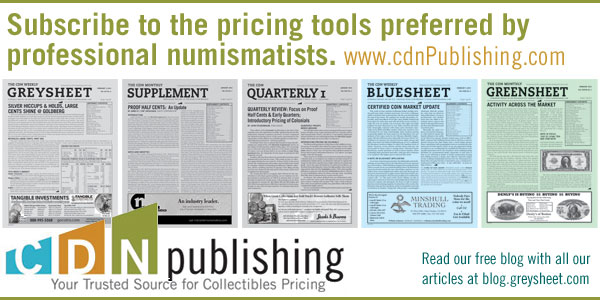
NEW YORK INTERNATIONAL ANNOUNCES NEW VENUE

Kevin Foley, long time Bourse Chairman for the New York International Numismatic Convention has announced date and site commitments for the event through 2022. Foley said, “As probably everyone knows who has a smartphone, reads the newspapers or watches television news broadcasts, our home since 2012, the Waldorf Astoria Hotel, has been purchased by the Anbang Insurance Company, a risk management firm located in China. The acquisition price was 1.9 billion dollars, a world record for a single hotel operation. The new ownership group announced a few months ago that in the Spring of 2017 the Waldorf would be shutting down for a three year renovation project that would see it reemerge as luxury condominiums and a downsized 300-500 room ultra-luxury hotel. Although this will not affect our 45th Annual NYINC, with bourse dates of January 12-15, 2017, we obviously will need to hold our event somewhere else in 2018 and beyond.”
Foley continued, “After an intensive site search and detailed evaluation of multiple hotel properties in Manhattan, I’m both pleased and excited to announce that beginning in 2018, our new home will be a flagship property of the Hyatt Hotel chain, the Grand Hyatt, located at 109 East 42 nd Street, between Lexington and Park Avenues. The Hyatt is just seven blocks South of our Waldorf site and enjoys a direct indoor connection with Grand Central Station, a subway and regional commuter train hub, with no less than six different subway line stops, as well as being the terminus for the Metro North commuter train system. What we are especially pleased about, however, quite beyond this ease of access and the undeniable luxury of the Hyatt, is the fact that we will no longer need to operate on the same dates as the FUN show bourse”.
Foley also said, “I know that some people tried to portray our frustratingly perennial date overlaps with FUN as some sort of test of wills between the two events, but the past date conflicts simply arose from the realities of date and site availability issues that the management of both events were confronted with. So, for the next six years, including our upcoming 2017 convention, members of the numismatic community will be able to take part in both FUN and NYINC.
Rick Ponterio, President of the NYINC, joined with Foley in making the announcement and said. “In even more good news, the ballroom facilities at the Hyatt will enable our bourse dealers to all be in the same room. I know that our four separate bourse room setup at the Waldorf was somewhat unconventional, but people did get used to it and it worked, although I’m really glad that our entire bourse will be in one ballroom at the Hyatt. We’ll also have more than ample space for our multiple auction lot viewing areas and eight days and nights of auctions. I just feel really ramped up about what a positive development for everyone, booth holders, early birds and collecting public our move to the Hyatt will prove to be”.
For more information, see:
www.nyinc.info
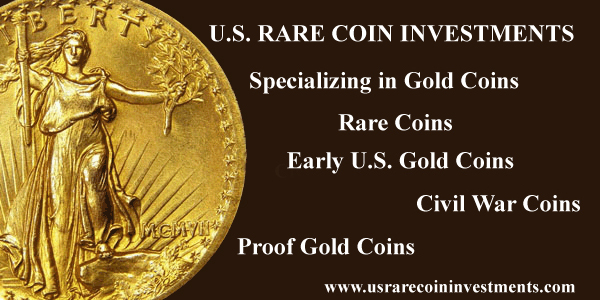
HAPPY ANNIVERSARY: GUTENBERG'S PRINTING PRESS
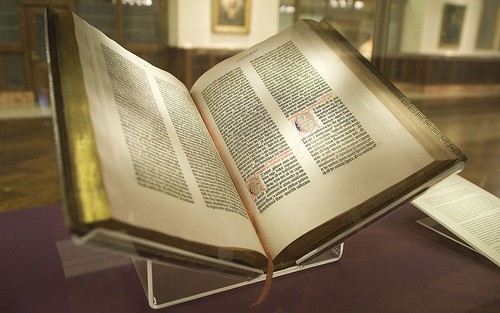
On this day in 1452, the first section of the Gutenberg Bible was finished in Mainz, Germany, by the printer Johannes Gutenberg. Little is known of Gutenberg’s early history or his personal life except that he was born around the year 1400, the youngest son of a wealthy merchant. But from the time of the appearance of his beautiful Bibles, he has left an indelible mark on human culture.
Ancient books had primarily been written on scrolls, though an innovation in the second century A.D. — that of the codex, a sheaf of pages bound at one edge — gave us the familiar book form we recognize today. Early codices were produced by hand by monks in scriptoriums, working with pen and ink, copying manuscripts one page at a time so that even a small book would take months to complete and a book the size of the Bible, rich with color and illuminations, would take years.
Gutenberg’s genius was to separate each element of the beautiful, calligraphic blackletter script commonly used by the scribes into its most basic components — lowercase and capital letters, punctuation, and the connected ligatures that were standard in Medieval calligraphy — nearly 300 different shapes that were then each cast in quantity and assembled to form words, lines, and full pages of text. He also invented a printing press to use his type, researching and refining his equipment and processes over the course of several years. In 1440, Gutenberg wrote and printed copies of his own mysteriously titled book, Kunst und Aventur [Art and Enterprise], releasing his printing ideas to the public, and by 1450 his movable-type printing press was certainly in operation.
Only four dozen Gutenberg Bibles remain, and of these only 21 are complete, but what Gutenberg created went far beyond the reach of those volumes. By beginning the European printing revolution, he forever changed how knowledge was spread, democratized learning, and allowed for thoughts and ideas to be widely disseminated throughout the known world. In his time, Gutenberg’s contemporaries called this “the art of multiplying books” and it was a major catalyst for the Renaissance, the Scientific Revolution, and even the Protestant Reformation.
To read the complete article, see:
The
Writer's Almanac September 30, 2016
(http://writersalmanac.org/episodes/20160930/)
The Lenox copy, on paper, is the first Gutenberg Bible to come to the United States, in 1847. Its arrival is the stuff of romantic national folklore. James Lenox's European agent issued Instructions for New York that the officers at the Customs House were to remove their hats on seeing it: the privilege of viewing a Gutenberg Bible is vouchsafed to few.
To read the complete Wikipedia entry, see: Printing press (https://en.wikipedia.org/wiki/Printing_press)
THE BOOK BAZARRE
ROMAN COINS FOUND IN RUINED JAPANESE CASTLE
When archeologist Hiroyuki Miyagi heard that a bunch of ancient Roman and Ottoman coins had been unearthed from the ruins of an old castle in Okinawa, he initially thought it was a hoax.
"I couldn't believe they'd found coins from the Roman empire in Kasturen castle," Miyagi, who works at Okinawa International University, told CNN.
"I thought that they were replicas that had been dropped there by tourists."
Since 2013, a team of archeologists from Uruma city's local Board of Education has been excavating Katsuren castle -- a UNESCO world heritage site -- which is located in Okinawa, Japan's southernmost prefecture.
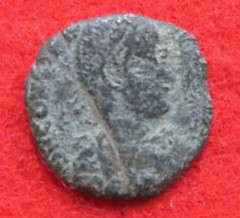 Yet the ancient coins -- ten in total -- were only
discovered recently when Toshio Tsukamoto, a researcher from
Gangoji temple cultural properties department, spotted them when
he traveled to the castle from Nara. The Uruma Board of Education
announced their discovery Monday.
Yet the ancient coins -- ten in total -- were only
discovered recently when Toshio Tsukamoto, a researcher from
Gangoji temple cultural properties department, spotted them when
he traveled to the castle from Nara. The Uruma Board of Education
announced their discovery Monday.
"I'd come to analyze artifacts like Japanese samurai armor that had been found there when I spotted the coins," Tsukamoto, told CNN.
"I'd been on excavation sites in Egypt and Italy and had seen a lot of Roman coins before, so I recognized them immediately." The coins were later submitted to Miyagi, who examined them using X-ray technology.
"You can see the engravings on the coins clearer when you use X-rays," Miyagi, told CNN.
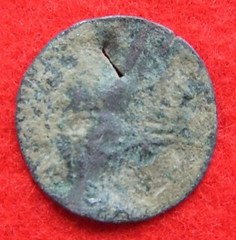 The archeologist found that the Ottoman coin had
inscriptions that dated it to 1687, while the Roman coins
appeared to be much older -- from at least 300 to 400 AD.
The archeologist found that the Ottoman coin had
inscriptions that dated it to 1687, while the Roman coins
appeared to be much older -- from at least 300 to 400 AD.
It's hard to tell where exactly these coins came from, Masaki Yokou, a spokesperson from Uruma city's Board of Education, told CNN.
Dubbing it a "strange and interesting find," Yokou explained that Katsuren castle was known to have trade relations with China and other neighboring Asian countries in the 14th and 15th century.
"We don't think that there is a direct link between the Roman empire and Katsuren castle, but the discovery confirms how this region had trade relations with the rest of Asia," Yokou, told CNN.
Both Yokou and Tsukamoto speculated that the coins ended up in Japan after passing through different trade routes that linked the West to Asia.
Miyagi, who called the discovery "remarkable," said the next step was to try and find out how exactly these coins ended up in Japan.
To read the complete article, see:
Ancient Roman coins found in ruined Japanese castle
(www.cnn.com/2016/09/27/luxury/ancient-roman-coins-japan/)
The four copper coins were retrieved from soil beneath Katsuren Castle on Okinawa Island, and were originally thought to be a hoax before their true provenance was revealed.
The designs on the coins are difficult to decipher as they have been eroded over time, but x-ray analysis revealed several of the relics bore the image of Emperor Constantine I.
Since excavation on the site began in 2013, researchers have also found a further six coins which may be dated back to the Ottoman Empire in the late 17th century.
To read the complete article, see:
Ancient Roman coins found buried under ruins of Japanese castle
leave archaeologists baffled
(www.independent.co.uk/news/science/archaeology/roman-coins-discovery-castle-japan-okinawa-buried-ancient-currency-a7332901.html)
Phil Mernick forwarded an article from MSN News, He writes:
I don’t think the Romans knew of the existence of Japan and the coins could have got there any time between the 4th and the 17th century (when I think it went out of use), but it makes an interesting story. They also found some Ottoman coins from the 1680s. This would appear to be after the castle ceased to function as a castle so maybe the grounds were used by a foundry that imported scrap copper for reuse.
To read the Daily Mail article, see:
How did these Ancient Roman coins get to JAPAN? Artefacts are
found thousands of miles from where they were made
(www.dailymail.co.uk/sciencetech/article-3811089/Ancient-Roman-coins-unearthed-Japan-castle.html)
To read the Smithsonian article, see:
Archaeologist Finds Ancient Roman Coins in 12th-Century Japanese
Castle
(www.smithsonianmag.com/smart-news/archaeologist-finds-ancient-roman-coins-12th-century-japanese-castle-180960640/?utm_source=smithsoniandaily&no-ist)
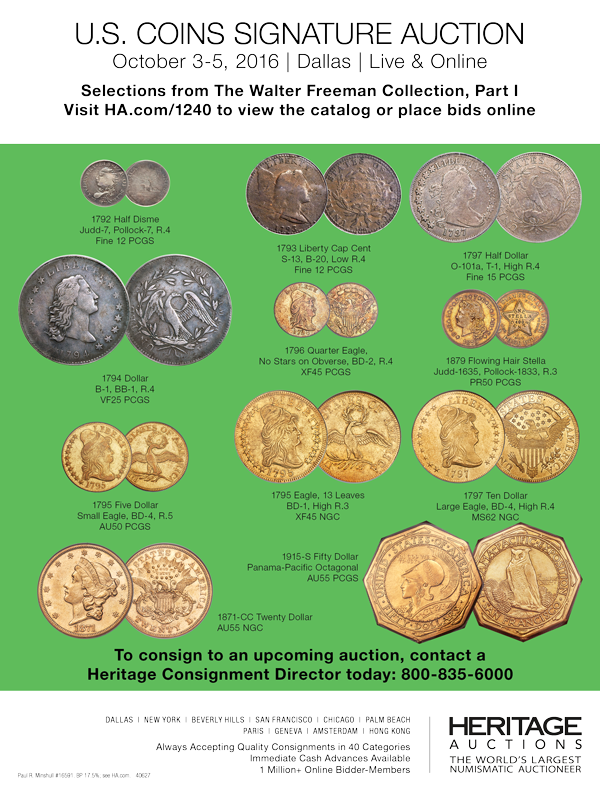
THE FACE-DOWN SKELETON'S SATCHEL OF COINS
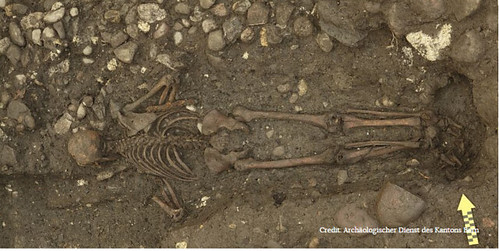
Swiss researchers may have solved the mystery over the identity of a 17th-century man who was buried face-down with a knife and purse filled with coins.
X-ray computer tomography of the coins has revealed the man was likely a merchant, but the reason for his prone burial continues to puzzle the archaeologists.
Unearthed in 2013 in the Bernese Lakeland region of Switzerland during the construction on a new underground garage, the skeleton was found along 342 bodies laid to rest between the 8th and 17th centuries. The individual was among the last 15 bodies to be buried at the ancient cemetery.
The face-down skeleton stood out from all the other graves.
Under the individual's chest, the archaeologists found what remained of a leather purse. Over time, the leather had decomposed and the coins it contained had corroded together to form a solid block of metal.
Unable to separate the coins, the researchers turned to a powerful X-ray computer tomograph, a new instrument called µDETECT. Used in conjunction with a high resolution detector, the µDETECT revealed the presence of 24 coins.
"The astonishing fact about these coins is that they belong to three different coin circulation areas, the Fribourg-Bern-Solothurn, Basel-Freiburg in Breisgau and Luzern-Schwyz regions," Weiss said.
The finding suggests the individual was moving in these three areas, which had their own coins in local circulation at that time.
"It is possible he was a traveling merchant," Weiss said.
With one exception, a heavily worn silver coin from France, all the coins in the purse are of rather low value.
"They are really just small change," Weiss said. "The most interesting to me isn't really one particular coin, but the ensemble all together. We rarely get such a big ensemble of small value coins from this time."
The latest among the coins in the purse dates from 1629, indicating the man must have been buried after then. The reason behind the face-down burial remains a mystery.
To read the complete article, see:
Mystery Over Face-Down Skeleton Partly Solved
(www.seeker.com/mystery-over-face-down-skeleton-partly-solved-2019033768.html)
ZARA SIEGE COINAGE
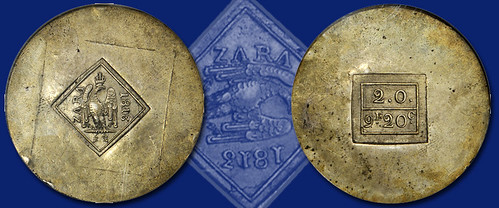
The January New York International Numismatic Convention and the Showcase Auction held by Stack’s Bowers Galleries will usher in 2017 for numismatists from around the world. Coin dealers and collectors based here in the United States will also be in attendance at the historic Waldorf Astoria hotel in Manhattan for a week’s worth of lectures, auctions and other show activities. In anticipation of this event, we begin previewing highlight coins from the auction on our blog here, and distributed through our newsletter email.
The inaugural coin has a very small mintage and a fantastic history. This coin was produced in modern day Croatia, on the Dalmatian coast during the Napoleonic Wars. Towards the end of 1813, as the Allied forces arrayed against Napoleon pushed him back towards France, the fringes of the French Empire were beginning to crumble. The French held territories on the Adriatic coast of the Balkan Peninsula (known as the Illyrian Provinces) were now vulnerable to attack by the British Navy and their Austrian allies.
During the siege of Zara, the French garrison – led by Baron Claude Roize – struck emergency coinage. Though the siege lasted for only two weeks, three denominations were created. They all share a basic design, with the example in our upcoming sale denominated at 9 Francs and 20 Centimes, the middle denomination. The obverse features a crowned slender eagle standing atop a thunderbolt facing right, with “ZARA” at the left wing and the date of “1813” on the right. The design is encapsulated within a diamond border. The reverse displays the denomination in a square stamp; “9f. 20c.” with “2. O.” above indicating (about) two ounces of silver. Overall this piece displays some sharp details in the stamps and is well preserved. This provides a fantastic view into the daily life of a besieged French soldier during the Empire of Napoleon.
To read the complete article, see:
Incredible Siege Coinage from the Napoleonic Era
(www.stacksbowers.com/News/Pages/Blogs.aspx?ArticleID=2273)

THE DOLLAR IN REVOLUTIONARY AMERICA
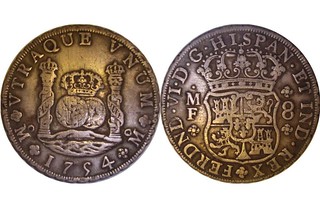 "Pennies make dollars” is a phrase that has been
around a long time and we all know what it means. But, how many
pennies does it take to make a dollar? Silly question you may
say—it’s one-hundred, of course. That’s the right answer for
today’s America, but that would not necessarily be the right
answer if you lived in Revolutionary America. The United States
dollar as we know it came into existence with the passage of the
Coinage Act in 1792 which based the dollar on a decimal system
and said that coins would be a certain number of one-hundredths
of a dollar—half-dollar equals fifty cents, quarter-dollar equals
twenty-five cents, etc. Prior to that, however, the dollar had a
different structure.
"Pennies make dollars” is a phrase that has been
around a long time and we all know what it means. But, how many
pennies does it take to make a dollar? Silly question you may
say—it’s one-hundred, of course. That’s the right answer for
today’s America, but that would not necessarily be the right
answer if you lived in Revolutionary America. The United States
dollar as we know it came into existence with the passage of the
Coinage Act in 1792 which based the dollar on a decimal system
and said that coins would be a certain number of one-hundredths
of a dollar—half-dollar equals fifty cents, quarter-dollar equals
twenty-five cents, etc. Prior to that, however, the dollar had a
different structure.
There is a major point that must be understood in any discussion of Revolutionary War era economics. All parts of the United States today are connected within a single economy. Prior to the completion of independence in the 1800s, however, America consisted of hundreds of individual economies ranging from small villages to large groups of merchants—the latter with close connections to the economies of Europe. Being quite limited in scope, most of these systems operated independently of each other and experienced minimal, if any, influence from the outside world. Each set values and prices had a basis in the local conditions. The coming of war forced the nascent United States to attempt to develop our first true national economy.
In the eighteenth-century western world, the economies of all countries relied to some extent on silver and gold coins (called “specie” or “hard money”) minted by each country. England and the British colonies based their system on pounds, shillings, and pence—one pound (1£) consisted of twenty shillings (20s) and each shilling had twelve pence (12d). A common form of expressing amounts in this system displayed £.s.d and this format will be used in this article.
To our modern decimal-oriented monetary mind this may look to be a complicated system but it does have a distinct advantage. Comprised of 240 pence, a pound can be evenly divided by several numbers—2, 3, 4, 5, 6, 8, 10, 12, 15, 16 and so on. Try dividing a dollar of one-hundred cents by 3, 6, 8, 12, 15, 16, etc.—it cannot be done without some fraction left over. In a society without calculators conveniently at hand, having money that could be quickly and evenly divided in many different ways made life a bit simpler.
To read the complete article, see:
THE DOLLAR IN REVOLUTIONARY AMERICA
(https://allthingsliberty.com/2016/09/dollar-revolutionary-america/)
THE BECK’S PUBLIC BATHS TOKEN
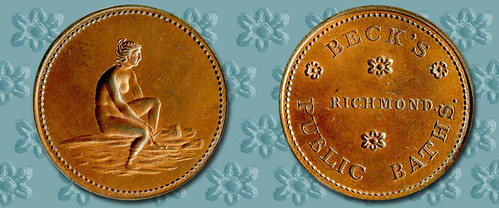
In numismatics some coins, tokens, medals, and paper money issues are popular for one generation and generally ignored by another. These situations, of which there are many, are interesting to contemplate.
In the year 1906 many more people collected encased postage stamps than collected Morgan silver dollars by date and mintmark. Today in 2016, or 110 years later, hundreds of thousands of enthusiasts seek Morgan silver dollars from the Carson City, New Orleans, and San Francisco mints, but the number of specialists seeking encased postage stamps aggressively is probably no more than a few dozen.
Conversely, in 1988 Gem Mint State silver commemorative coins 1892 to 1954, consisting of 142 different dates and mintmarks of half dollars plus the 1893 Isabella quarter and 1900 Lafayette dollar were hot as firecrackers. Today in 2016 they are in much lower demand, and many MS-65 coins can be purchased for a third or less of the price they brought then.
There are some series that are evergreen in popularity. In over 60 years of being a key factor in the rare coin market plus studying numismatic history back to the 18th century (William Bentley, D.D. is the earliest systematic collector of American coins I have located; he obtained Vermont, Connecticut, and other coins as they were issued in the 1780s), I have identified quite a few specialties that have been everlastingly popular. One is copper cents 1793 to 1857. There has never been a time in which a lovely Fine or Very Fine (or whatever grade) 1793 cent has failed to attract enthusiasm. The same thing can be said for colonial and related coins. Such coins as the 1652 Pine Tree shilling have always been in strong demand. The same is true for colonial currency. Ditto for Civil War tokens (the first specialized articles in the first several issues of the American Journal of Numismatics, which made its debut in May 1866, were on Civil War tokens).
Beck's Public Baths
The same thing can be said for Hard Times tokens, generally
classified as cent-size tokens issued from 1832 to 1844. These
were popular in the 1850s, and some were first listed in a book
in 1858 (by Charles I. Bushnell).
... one of the most famous and most desired Hard Times tokens—the copper issued by Beck's Public Baths. In my Guide Book of Hard Times Tokens (Whitman, 2014, now in its second large printing), I listed this as variety W-VA-040. It is also listed as Low-275 and by Russell Rulau in the Standard Catalog of U.S. Tokens 1700-1900 as HTT-441. I estimate the number known as in the 100 range, most of which show some wear. Very Fine and Extremely Fine are typical grades. The finest known is illustrated, the beautiful Mint State coin with most original red color, that I purchased as Lot 3285 in the Dice-Hicks Collection sale, July 2008, for $16,100. The price might seem to be a bit unusual, but if it were a 1794 copper cent of comparable rarity and grade, it would likely sell for 10 times the price!
I hasten to say that most Hard Times tokens sell for much less, and beautiful Mint State examples of many varieties can be purchased for a few hundred dollars or less. Some of these are among the most interesting, such as the anti-Jackson tokens of 1837 featuring a jackass and other punny motifs. Back to Beck's:
In the period from about 1832 to 1844, when Charles Beck distributed his Beck's Public Baths tokens in Richmond, Virginia, bathing was an occasional experience at best. Houses did not have indoor plumbing, and for most people in the city the closest thing to a bath was wiping with a soapy wet cloth. Across the country, some academies and boarding schools made it an offense to bathe in the colder months, the practice being deemed unhealthy.
For those who desired to bathe, public baths were operated in most of the larger cities. If you read the history of the (inexpensive) Hard Times tokens issued by W.A. Handy of Providence, Rhode Island, you will learn that City Baths in 1834 occupied the premises earlier used by Handy for his tailoring and clothing business.
Records show that in 1832, Charles Beck was a confectioner and the operator of a bathing facility. The baths were in operation until at least 1844. These tokens, about the size of a quarter dollar, may have circulated locally as currency, or, more likely, they were used as admission checks. The dies are by James Bale or Bale & Smith of New York City.
With its somewhat risqué depiction of a nude woman, this token is a favorite today, just as it was with collectors of the mid-19th century when J. Ledyard Hodge sought to obtain some for his collector friends in Philadelphia.
If you would like to learn more about tokens in general, also buy or borrow a copy of The 100 Greatest Medals and Tokens, an award-winning book that Kathryn Jaeger and I did for Whitman a few years ago and which is still in print. Also check the Token and Medal Society's website. I was among the founders of this great group more than 50 years ago.
To read the complete article, see:
Popular for Over 150 Years! The Beck’s Public Baths Token
(www.stacksbowers.com/News/Pages/Blogs.aspx?ArticleID=2270)
THE BOOK BAZARRE
ASIAN COINS FOUND IN DEADWOOD'S CHINATOWN
Margie Akin and husband Kevin Akin will present “The Coins of Deadwood: A Brief Summary on the Asian Coins Recovered in Deadwood, S.D.,” at noon Tuesday at Deadwood City Hall, 102 Sherman St.
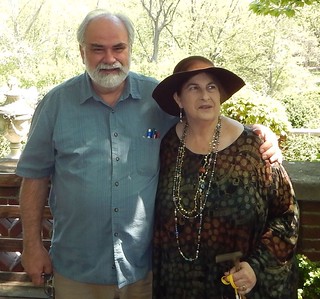 The authors of the recently published 300-page field
guide, “Numismatic Archeology of North America,” say they are
excited to visit the Wild West town this week and continue
tracing the origins of hundreds of Asian coins and tokens
discovered here, which shed a light on the gold camp’s frontier
days.
The authors of the recently published 300-page field
guide, “Numismatic Archeology of North America,” say they are
excited to visit the Wild West town this week and continue
tracing the origins of hundreds of Asian coins and tokens
discovered here, which shed a light on the gold camp’s frontier
days.
“I’ve only been to Deadwood once and Kevin has never visited,” Margie Akin said Thursday from her Riverside, Cal., home. “It’s always interesting for us to go to a place where we have worked on materials, like Deadwood’s Chinese coins, to meet those involved in excavations, and to see other materials found in the archeological digs.
“Understanding the setting in which they were found is extremely important and we’ve been working hard to get archeologists and collectors to work together rather than competitively, because we can learn a lot from each other,” added Akin, who has been widely published in the field of historic archaeology and numismatics.
Although Deadwood’s history dates back only 140 years, coins from the old Deadwood Chinatown tell some particularly interesting stories, according to local historic preservation officials. Analyses of Asian and other coins from the site, begun in 2015 and completed in 2016, show similarities to and differences from Asian coins recovered elsewhere in the American West.
When archaeologists spent four summers digging and sifting through the remnants of this community’s Chinatown a decade ago, they uncovered a treasure trove totaling a quarter-million artifacts that traced the history and mystery of the mining camp’s early Asian settlers.
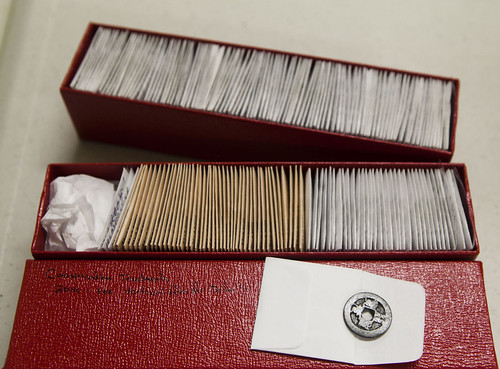
The finds also include the oldest coin yet found in South Dakota, Chinese and Vietnamese coins used in playing fan tan, and Chinese coins used in talismans, and by numismatists and private collectors, they said.
"The Deadwood Chinatown archaeological assemblage is a wonderful asset in preserving and interpreting Deadwood’s history," City Archivist Mike Runge said Friday. "The Asian coins are just one example how the Deadwood Historic Preservation Commission and the City of Deadwood are working with professionals from various fields to learn more about our past."
The Akins’ new book, the result of more than two decades of research, includes a photo of one of Deadwood’s rare Asian coins. The couple will have their book available for purchase and conduct a book-signing.
“It’s a book that has several target audiences, including information for archeologists who don’t have a background in numismatics but need information for reports, professional numismatists and collectors, as well as museums curators,” she said. “So many people will find this book useful and helpful for different reasons.”
To read the complete article, see:
Experts on Asian coins coming to Deadwood
(http://rapidcityjournal.com/news/local/experts-on-asian-coins-coming-to-deadwood/article_19327684-d738-5a67-9d2e-0b285ce72ae2.html)
MEDAL OF COIN CABINET DIRECTOR FRANZ NEUMANN
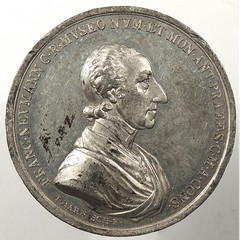
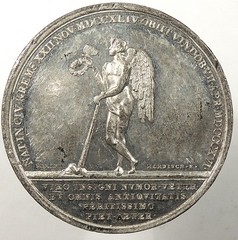
AUSTRIA: Vienna 1816 42mm Medal Franz Neumann,
dir. Of coin cabinets at Wien Mus – White Metal
I recently picked up a new piece for my collection that is outside of my normal collecting habits. This piece appealed to me for multiple reasons. Not only does it have a stunning reverse but it is a numismatic item with a numismatic topic. It doesn’t get better than this for me.
This medal was produced to honor the passing of Franz Neumann the director of Coin Cabinets at the Wien Museum in Vienna Austria in 1816. Here is a short history of this amazing museum and its holdings.
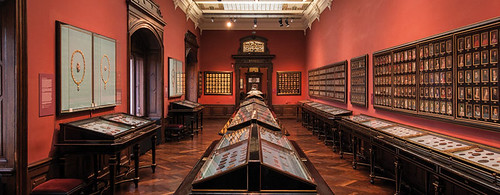
Coin Collection
The Coin Collection is one of the five largest and most important
coin collections in the world. With some 600,000 objects from
three millennia, it contains not only coins, but also paper
money, medallions, orders, etc. Some 2,000 objects can be seen in
the three halls housing the permanent display, which represents
only a small part of the holdings.
The first hall offers an overview of the history and development of the medal from its origins in Italy around 1400 up to the 20th century. Austrian and European orders and medals of honor are likewise presented here. The second hall focuses on the history of coin and paper money, from pre-monetary forms of payment and natural monies to the invention of the coin in the 7th century B.C. in the region of the Lydian coast and on up to the 20th century. The third hall is reserved for special exhibitions.
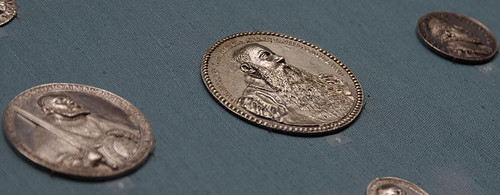
History of the collection
The interest in old coins goes back a long way. For rulers,
discoveries of buried treasures-insofar as these contained coins
made of precious metals-represented a welcome increase in their
supplies of gold and silver. Either the pieces were melted down
for their metal, or they were admitted to the ruler’s hoard. It
was from just such hoards that some of the later art collections
first arose. This fact puts coin collections among the world’s
oldest museum related institutions. This also applies to the
Vienna Coin Cabinet, which arose from the Habsburg collection,
which had been continuously maintained and expanded.
The oldest extant inventory was established around 1547 under Ferdinand I (1503-1564). The coins listed by Leopold Heyperger, the emperor’s treasurer, are almost all of ancient Roman origin.
Archduke Ferdinand II (1529-1595), ruler of Tirol, and likewise an enthusiastic collector of art objects, had his own coin collection. The cabinets in which he stored his coins still exist today: they are kept in the Vienna Coin Cabinet and at Ambras Castle.
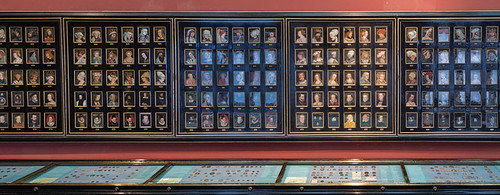
Emperor Rudolf II (1552-1612), who made his imperial seat of Prague into a cultural center, likewise expanded the holdings of the Habsburg coin collection and distinguished himself above all as a patron of the medalist’s art.
But it was only a century after Rudolf’s death that the Imperial Coin Cabinet was to truly awaken and come into its own. Emperor Charles VI (1685-1740) appointed the Swedish academic Carl Gustav Heraeus as Inspector of Medals and Antiquities in 1712. Heraeus was assigned the task of combining Ferdinand’s collection from the Court Library, the Treasury of Archduke Leopold Wilhelm housed at the Stallburg, and the Coin Collection of Ambras Castle in order to establish a unified imperial cabinet at a single location.
Emperor Francis I Stephen of Lorraine (1708-1765), husband of Maria Theresia (1717-1780), added a new dimension to the imperial coin collecting policy. He placed his main emphasis on coinage that was modern at the time. The year 1748 is one of the highpoints in the history of the Numismatic Collection in Vienna. At the time, Francis I Stephen of Lorraine ordered that the Numophylacium Carolino-Austriacum and the Numophylacium imperatoris Francisci I be combined. The overall inventory prepared for this occasion listed nearly 50,000 items, including 21,000 ancient coins.
In the year 1774, the secularized Jesuit priest Joseph Hilarius Eckhel was appointed head of the Coin Cabinet, and this man was to become an important figure for ancient numismatics in general: His system of categorizing coins according to geographic and chronological criteria, known as the “Eckhelsche Ordnung,” is still in use today.
Furthermore, Eckhel's ten-volume Doctrina nummorum veterum achieved worldwide fame and admiration for the Imperial Cabinet for the first time. During the 19th century, the findings of other historical disciplines were to further transform the field of numismatics. Purely descriptive numismatics was joined by an interest in the history of money as such, a fact which also lead to the expansion of collecting activities. Today, the Coin Cabinet contains far more than just coins, including other instruments as well such as paper money and paper securities, tax stamps, tokens and tickets, seals and seal stamps, coin scales and weights, orders, medals of honor and historic coin and medal minting stamps. In this, the Coin Cabinet has also become a collection point for documents that represent money in all its forms and functions.
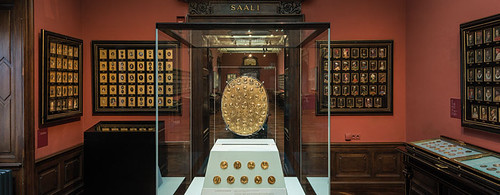
Upon the opening of the newly established Kunsthistorisches Museum on Vienna’s Ring Road in 1891, the various imperial collections-which up to then had been housed in various buildings-were finally brought together in one place. The “Cabinet of Coins and Antiquities” was initially kept in rooms on the first floor before being moved to the second floor in 1899. Since 1900, the Coin Cabinet has existed separately from the Antiquity Collection as a collection in its own right.
Neumann, Franz de Paula
November 22nd, 1744 – April 7th, 1816 Vienna
In the wake of the abolition of the Dorotheerstiftes in Vienna, Neumann sought employment at Court (in the library or in the numismatic collection), which he first became second stringed Director under Verot without pay in February 1783 in the numismatic modern collection. After Verots death Neumann took over his salaried Director position on November 5, 1786. After Eckhels's death, on June 1, 1798, he received the Directorate of ancient Numismatics which put both cabinets once again under the leadership of a Director.
Neumann was born in Krems on November 22nd, 1744. When he was 9 years old he came to Buttelstedt regulirten Chorherrn to St. Dorothea in Vienna as a choirboy.
Harnisch, Johann Augustin (auch Johann Baptist)
July 22nd, 1777, died April 24th, 1826 Vienna
First employed in Prague in the year 1800 at the Mint in Vienna. From here his career advanced up to the Chamber medallist and a Director of the engraver Academy in 1811.
Thank you to Dr. Heinz Winter from Kunsthistorisches Museum Wien for his help with biographical information on Mr. Harnisch and Mr. Neumann. This information was sent to me in German and I have done my best (poorly) to translate in to English. Most of the other information and pictures came from the museum website at http://www.khm.at/en/visit/collections/coin-collection/
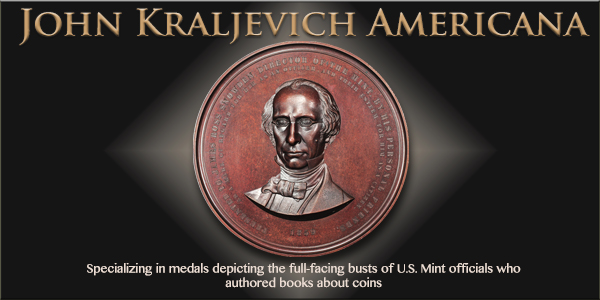
FALKIRK UNION BANK NOTES OFFERED
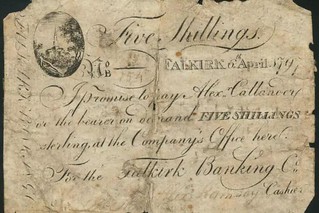 Twenty-five pence is is considered a small amount of
money now, but in Falkirk 200 years ago it was such a tempting
sum that someone went to the trouble of forging a banknote to
obtain it!.
Twenty-five pence is is considered a small amount of
money now, but in Falkirk 200 years ago it was such a tempting
sum that someone went to the trouble of forging a banknote to
obtain it!.
The proof that this strange incident took place is coming up for sale at an auction in London next Tuesday when a black and white five shillings note purportedly issued by the Falkirk Banking Company on April 6, 1797, is set to fetch between £400 and £500.
The note features the words ‘Falkirk Banking Co.’ and at first glance it looks genuine. But London auctioneer Spink says it is “probably a contemporary forgery” which means it was replicated around 1797 when five shillings - or 25p - was worth considerably more than it is now.
Despite its age, the allegedly dodgy note is is in “very good” condition and it is “rare” according to Spink. It is one of four black and white Falkirk banknotes, all produced between 1797 and 1815 when the town was printing its own money, which are expected to sell for between £950 and £1250 at Spink in Bloomsbury, London, next week.
According to James Douglas in his book Scottish Banknotes ,the Falkirk Union Banking Company “commenced business in 1803 with a capital of £12,000 held by 14 partners''.
It was sequestrated on October 18, 1816, with liabilities amounting to £60,000 and its failure led to one of the rare occasions in Scottish banking historywhere the noteholders were not paid in full.
The Falkirk notes coming up for sale at Spink are among 400 rare mostly 19th century banknotes put up for sale by the Edinburgh-based Chartered Institute of Bankers in Scotland.
Barnaby Faull, head of the banknotes department at Spink,said: “The collection is the largest single group of Scottish banknotes we have offered for many years and consists of a wide range of issued notes, proofs, specimens and other material spanning the full age and range of Scottish banks.”
To read the complete article, see:
Forged five shillings Falkirk banknote could fetch £500
(www.falkirkherald.co.uk/news/forged-five-shillings-falkirk-banknote-could-fetch-500-1-4240731)
To read the earlier E-Sylum article, see:
SPINK TO
SELL RARE BANKNOTES OCTOBER 4, 2016
(www.coinbooks.org/esylum_v19n39a39.html)
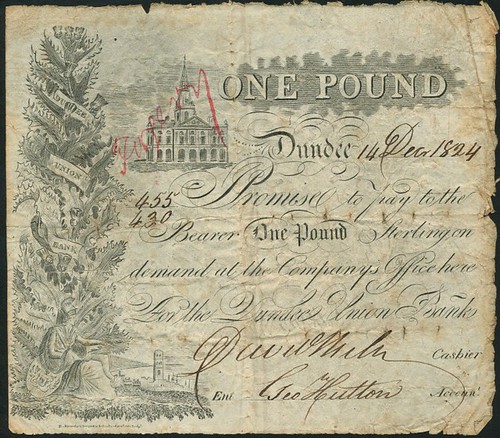
A set of rare Dundee, Perth, Fife and Angus banknotes, produced in an era when the area printed its own money could fetch thousands of pounds at auction.
One of the most valuable notes in the collection is a one pound note issued by the Dundee Union Bank on November 24, 1835 which features, at the top of the note, an image of The Three Graces.
It is expected to sell for between £600 and £800 early next month.
Another Dundee one pound note, issued by the Dundee Commercial Bank on November 5, 1830 could fetch between £500 and £700.
At the top of the note is an image of Dundee and its harbour as well as a maiden, symbolising abundance.
Although the note is mostly black and white, its value is highlighted on a blue background.
To read the complete article, see:
Old money to make fresh profits
(www.thecourier.co.uk/fp/news/local/291097/old-money-to-make-fresh-profits/)
ARTIST CONCEIVES REDESIGNED SCOTTISH BANKNOTES
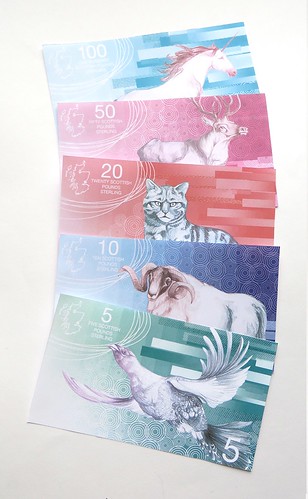 Amy Dunne, who is originally from Ireland, graduated in
May and is working part-time in Edinburgh while building up her
portfolio.
Amy Dunne, who is originally from Ireland, graduated in
May and is working part-time in Edinburgh while building up her
portfolio.
She designed the notes using a combination of traditional hand drawn pencil illustrations and simpler, graphic elements.
The illustrations show animals native to or related to Scotland which appear on the front of the notes, with the animals’ size increasing with denomination. The reverse of the notes feature outlines of some areas of Scotland.
Dunne told The National: “I’d seen a few note redesigns online that I liked, so I wanted a project like that for my portfolio.
“Seeing all the recent discussion in regards to independence led me to the idea of designing my own interpretation of what a national Scottish currency might look like.
“I chose to focus on the natural elements of Scotland, which is why I used animals associated with Scotland, and the rugged geographical outlines of areas of the country. The unicorn was a bit tongue in cheek though.
“The traditional pencil drawings of the animals are combined with saturated colours and clean graphics for a fresh and modern feel.
“The designs are simply concept work for my own personal illustration portfolio and while I am happy that people have shown an interest in them, I won’t be trying to get them into production any time soon.”
To read the complete article, see:
Wildcats, stags and unicorns feature in designer’s vision of new
banknotes
(www.thenational.scot/news/wildcats-stags-and-unicorns-feature-in-designers-vision-of-new-banknotes.23016)
For a loser look at the banknote designs, see:
Scottish Currency Redesign
(www.behance.net/gallery/42887455/Scottish-Currency-Redesign)
THIEF RUNS OFF WITH BARREL OF GOLD FLAKES
A bandit ran off with over $1 million worth of gold after swiping a barrel from an armored truck in Midtown, police sources said Friday.
The brazen theft went down on W. 48th St. near Fifth Ave. Thursday afternoon, when two guards on a Loomis International truck making a pick-up in the Diamond District noticed that one five-gallon drum of gold flakes – part of a larger shipment headed to Canada – was missing.
The 86-pound tin of precious metals, valued at around $1,565,000, was part of a delivery meant to end up in Ontario with a company called Asahi Refining, sources said.
The truck’s surveillance cameras caught a suspect lifting a container and sprinting off east on 48th St, sources said.
The truck had started its day picking up a load on W. 47th St. near 6th Ave, before making the stop on W. 48th St.
Four 55-gallon pails of silver and four other five-gallon containers of gold were untouched
To read the complete article, see:
Thief steals barrel of gold flakes from armored truck in NYC
(www.msn.com/en-us/news/crime/thief-steals-barrel-of-gold-flakes-from-armored-truck-in-nyc/ar-BBwRsYG?li=BBnb7Kz&ocid=edgsp)
To read the earlier E-Sylum article, see:
CANADIAN
MINT EMPLOYEE'S SPECIAL HIDING PLACE
(www.coinbooks.org/esylum_v19n39a43.html)

THE PREUSSAG COLLECTION – PART II
1 November 2016
London Coin Galleries in cooperation with Künker, Osnabrück
Auction sale 2: The Preussag Collection – Part II
Part 2 of the Preussag Collection will be auctioned off in London
On 1 November 2016 the second part of the Preussag collection will be auctioned off by London Coin Galleries in cooperation with Künker in Osnabrück. The material comprises 772 lots of mining coins, estimated at 630,000 GBP altogether.
On 1 November 2016 London Coin Galleries, in cooperation with Künker, will be selling the second part of the Preussag collection of mining coins by auction in London. The collection had been put together since the 1970s under the supervision of Karl Müseler. The first part of the collection, which included, among others, 217 lösers, was already dissolved with great success in October 2015.
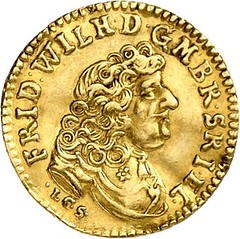
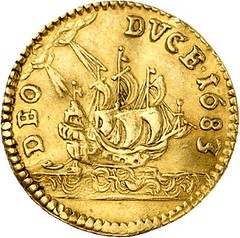
((No. 1017: BRANDENBURG. Frederick William, 1640-1688. Ducat 1638, LCS, Berlin. “Guinea ducat.” Very rare. Very fine. Estimate: 2,500 GBP))
The second and last part of the Preussag collection – altogether 772 lots with a total estimate of 630,000 GBP – doesn’t offer quite so spectacular material, but collectors and experts in this area will still find attractive pieces. Especially collectors of German coins will be pleased. After all, the largest part of the auction with almost 600 lots comes from the German States.
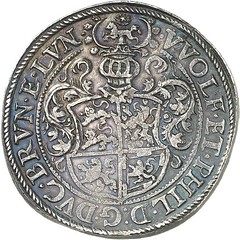
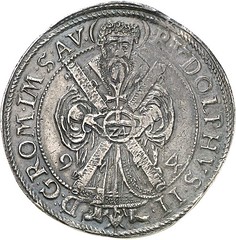
((No. 1032: BRUNSWICK-GRUBENHAGEN. Wolfgang and Philipp II, 1567-1595. Reichsthaler (24 groschen) 1594, Andreasberg, from the yield of the St Andrew’s mine. Very rare. Very fine to extremely fine. Estimate: 1,000 GBP))
By far the most comprehensive series of 260 lots comes from the different principalities of Brunswick-Lüneburg. It begins with a series of rare reichtsthalers of the Principality of Brunswick-Grubenhagen, minted in the years between 1594 and 1596 from the yield of the St Andrew’s mine. Take, as an example, a reichsthaler of 24 groschen featuring the title of Rudolf II from 1594, graded very fine to extremely fine.
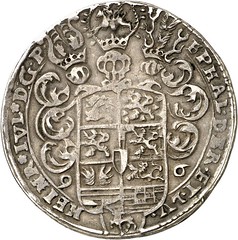
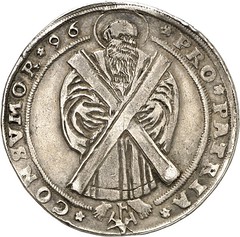
((No. 1043: BRUNSWICK-WOLFENBÜTTEL. Henry Julius, 1589-1613. Reichsthaler 1596, Andreasberg, from the yield of the St Andrew’s mine. Extremely rare. Very fine. Estimate: 1,000 GBP))
After the death of Philipp II, Henry Julius of Wolfenbüttel occupied the Principality of Grubenhagen and took over the profitable St Andrew’s mine so that the section Brunswick Wolfenbüttel also starts with thalers which show Saint Andrew and were minted from the yield of the St Andrew’s mine. The earliest pieces date back to the year of the occupation, 1596, like this extremely rare mule from 1596 graded very fine.
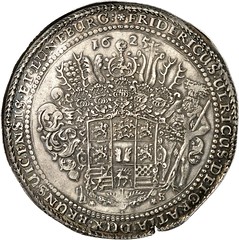
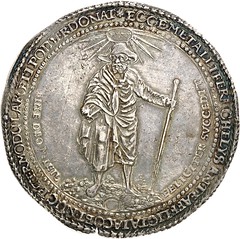
((No. 1072: BRUNSWICK-WOLFENBÜTTEL. Frederick Ulrich, 1613-1634. Löser of 1 1/2 reichstalers 1625, Goslar or Zellerfeld. Yield from the St Jacob’s mine in Lauthenthal. Very rare. Almost extremely fine. Estimate: 3,000 GBP))
Frederick Ulrich had been using the St Andrew’s mine during the first years of his reign but, at the Reichskammergericht’s command, had to hand it over to Christian I of Brunswick- Lüneburg, whose turn it was now to mint thalers from the silver of the Andrew’s mine. Frederick Ulrich, however, could take comfort in the fact that the St Jacob’s mine in Lautenthal yielded great profits. Its silver was minted into the stunning jakobslösers, of which a last specimen of the Preussag collection will be auctioned off in this part of the auction.
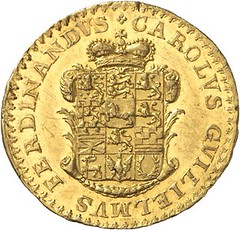
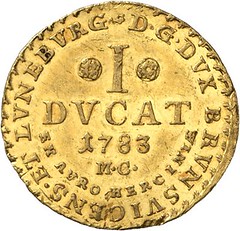
((No. 1111: BRUNSWICK-WOLFENBÜTTEL. Charles William Ferdinand, 1780-1806. Ducat 1783, Brunswick. “Harzgold Ducat.” Very rare. Extremely fine. Estimate: 1,250 GBP))
In this auction impressive medals featuring mining themes as well as a large number of Harzgold ducats are up for sale. In addition, there is yet another batch of lösers this time, for instance the type from Christian Louis from Clausthal, which shows the Saxon Steed jumping over a mining landscape, or the lösers from Zellerfeld depicting the Wild Man.
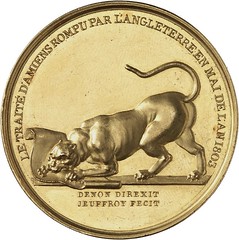
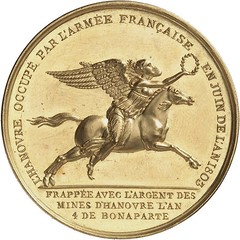
((No. 1277: HANNOVER. Gold medal, 1830, by R. V. Jeuffroy, on the breakdown of the Treaty of Amiens and the occupation of Hannover by Consul Napoleon. Extremely rare. Probably unique specimen in gold. Extremely fine to FDC. Estimate: 5,000 GBP))
Lot 1277 lists a very special piece, which is not strictly a mining coin. We are dealing with a specimen of the medal of 1803 that R. Jeuffroy created on behest of Napoleon on the breakdown of the Treaty of Amiens and the occupation of Hannover, cast in gold. Until now this piece was known in silver and bronze versions only. For the former, Napoleon must have used silver from the Welf mines, as can be read on the medal. This description, however, was kept on the bronze and gold medal. The latter seems to be the only surviving specimen, if not the only specimen struck, and, on top of that, from the possession of the Bonaparte family.
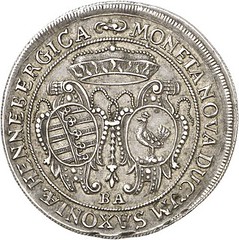
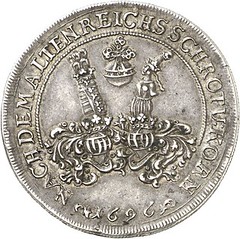
((No. 1315: HENNEBERG. 1/2 Reichsthaler 1696, Ilmenau. Thick thaler, minted with the dies of the 1/4 reichsthaler. Yield from the Ilmenau mine. Extremely rare, probably unique. Almost extremely fine. Estimate: 3,000 GBP))
The auction also presents a comprehensive series from Henneberg, Hesse, and especially from Hohnstein County. Let a piece of Henneberg be mentioned, which is likely a unique specimen, a half reichsthaler from 1696, a thick thaler to be more precise, minted with the dies of the 1/4 reichsthaler in Ilmenau.
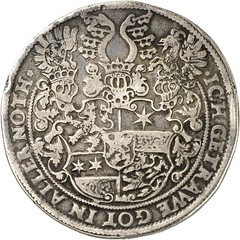
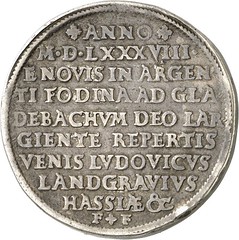
((No. 1325: HESSE-MARBURG. Louis IV, 1567-1604. Thick double reichsthaler from 1588, Gladenbach. Yield of the Gladenbach mines. 3rd known specimen. Very fine. Estimate: 7,500 GBP))
Hesse is represented in our preview by a thick double reichsthaler from 1588 from the yield of the Gladenbach mines, of which there are only three known specimen. The Gladenbach mint, which minted this piece, was moved to Marburg, the capital of Louis IV, as early as 1590.
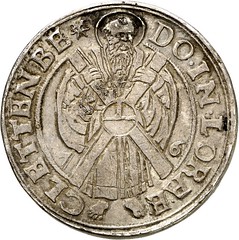
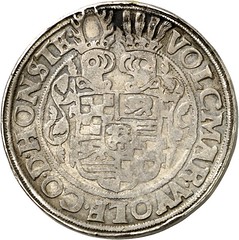
((No. 1394: HOHNSTEIN. Volkmar Wolfgang, 1562-1582. Thick double reichsthaler, 1576, Ellrich. Yield from the St Andrew’s mine. Extremely rare. Mounting removed, very fine. Estimate: 1,500 GBP))
The coinage from Hohnstein County brings us back to the depiction of Andrew that we already know from Brunswick. In fact the Andrew’s mine was originally located on territory of the Count of Hohnstein. When the house died out in 1593, the Duke of Brunswick- Grubenhagen confiscated the land in his position as overlord to bring the profitable silver mine in his possession. Even though the real heirs filed a suit at the Reichskammergericht, they were poorly compensated with several insignificant territories, while the valuable silver mine remained in the possession of the House of Welf.
Many thalers and other coins testify to the former wealth of the House of Hohnstein, so for instance this thick double reichsthaler from 1576, produced in Ellrich from the yield of the St Andrew’s mine.
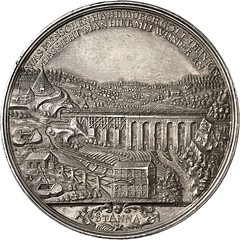
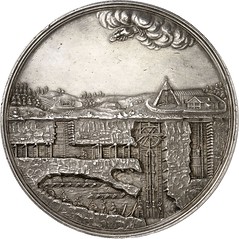
((No. 1464: SAXONY, Electorate. John George III, 1680-1691. Silver medallion of 8 reichsthalers 1690, by M. H. Omeis, yield from the St Anna and Altväter mine. Very rare. Extremely fine. Estimate: 2,500 GBP))
Let us turn to Saxony, represented with just under a 100 lots. The Elector of Saxony controlled the mining area surrounding Freiberg and thus had one of the richest silver resources at his disposal, which was one of the defining factors that enabled his taking an important role in the German States. Numerous thalers from 1542 onwards are on offer, also magnificent medals such as a stunning silver medallion of 8 reichsthalers from 1690, which accurately depicts how silver mining worked with the latest technology at the time.
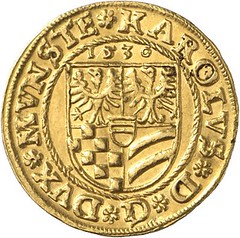
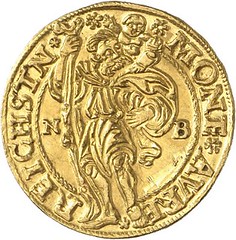
((No. 1533: MÜNSTERBERG-OELS. Charles I, 1511-1536. Ducat 1530, Reichenstein. Yield from the Reichenstein mine. Extremely fine. Estimate: 1,500 GBP))
Silesia, or the Duchy of Münsterberg-Oels respectively, is represented by a series of gold guldens and ducats from the yield of the Reichenstein mine, today Kasperske Hory.
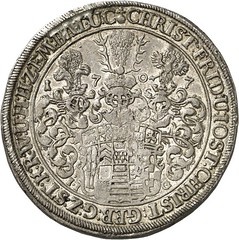
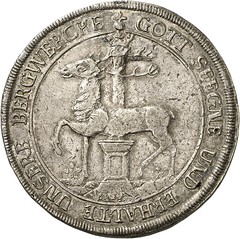
((No. 1567: STOLBERG. Christoph Frederick of Stolberg-Stolberg and Jost Christian of Stolberg-Rossla, 1704-1738. Thick double reichsthaler 1707, Stolberg. Yield from the Stolberg mines. Extremely rare. Tiny solder mark, very fine. Estimate: 2,000 GBP))
The current assumption concerning the descent of the lords of Stolberg is that they descended from the Dukes of Hohnstein. That would explain why the Stolberg family was in possession of large silver resources in the Harz mining areas. The auction offers a comprehensive series of Stolberg thalers, whose legend on the reverse reads in translation “God bless and preserve our mines”.
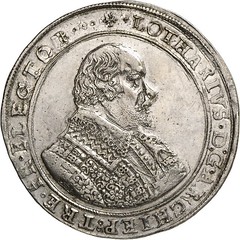
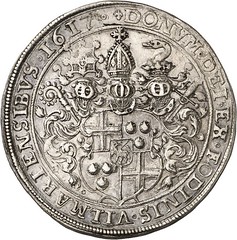
((No. 1583: TRIER. Lothar von Metternich, 1599-1623. Reichsthaler 1617, Coblence. Yield from the Vilmar mines. Extremely rare. Almost extremely fine. Estimate: 12,500 GBP))
Of course there are rare and stunning coins with mining themes or inscriptions from still other German territories, which indicate that the pieces were minted from mining silver or gold.
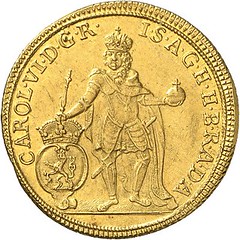
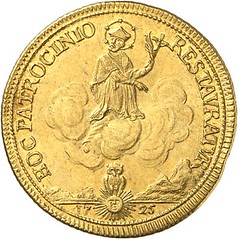
((No. 1608. HRE. Charles VI, 1711-1740. 2 Ducats 1725, Prague. Yield from Eule (Jílové) mines. Extremely rare. Extremely fine. Estimate: 10,000 GBP))
Next up are round about 50 lots of coins from the Holy Roman Empire and Austria with a small series of gold ducats from the House of Rosenberg from the yield of the Reichenstein mines.
The outstanding piece in this series is a double ducat of Charles VI, minted in Prague in 1725 from the yield of the Eule (Jílové) mines. The abundance of the mine was legendary: So the old chroniclers fabled that, at the time of Libussa, the mythological tribe mother of the Premyslids, golden nuggets had supposedly been found there, which were heavier than the duke and the duchess.
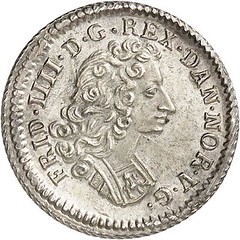
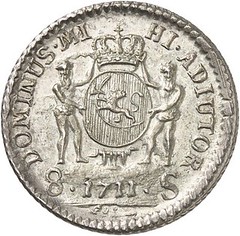
((No. 1683: NORWAY. Frederick IV, 1699-1730. Pattern of 8 Skilling 1711, Kongsberg. Very rare. Almost FDC. Estimate: 2,000 GBP))
Further, the auction offers c. 120 lots of coins and medals from Europe and overseas. The emphasis is on Denmark, France, and Norway.
The section multiple lots is remarkable. Up for sale are comprehensive but cleverly chosen assortments on the whole. For instance, lot 1762 could be of interest for a collector interested in gold investments. It comprises 151 objects altogether and primarily contains gold medals from the 20 th century, but also a series of gold coins from the American Gold Rush as well as a platinum coin. The highly attractive object, which absolutely needs viewing, is currently estimated at 50,000 GBP.
Starting in October, the auction can be inspected online on www.kuenker.de. By this time, a catalogue in German will also be available. You can order it at Künker, Nobbenburgerstr. 4a, 49 076 Osnabrück; Tel: 0541 / 96 20 20; Fax: 0541 / 96 20 222; or by e- mail: service@kuenker.de.
Until 28 October 2016, the viewing takes place exclusively in the halls of London Coin Galleries Ltd., 6 Shepherd Street, London W1J 7JE, UK. Please make an appointment at +44 207 493 0498 or at info@lcgcoins.com.
FEATURED WEB SITE: HOW COINS ARE MADE
This week's Featured Web Site is is a section of the U.S. Mint site describing how coins are made. It walks through the Blanking, Annealing, Upsetting, Striking, Inspecting, and Counting and Bagging processes, using cute animated .gifs for illustration.Making millions of coins every day is a complex process. People and machines have to work together smoothly. A tour through the United States Mint at Philadelphia or Denver to witness this process is well worth the visit. But if you can't make the trip, here are some online alternatives.

www.usmint.gov/circulating_coins/indexc526-2.html?action=coins

